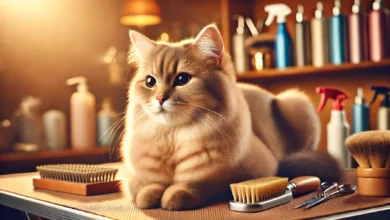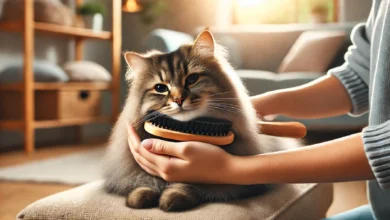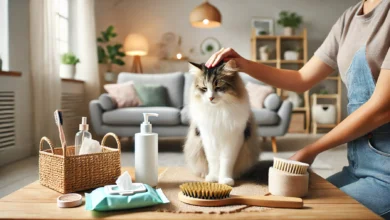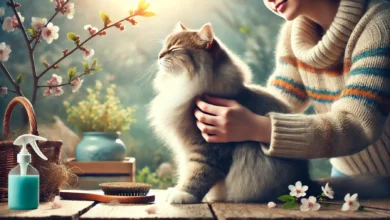How to Create a Grooming Routine for Your Cat
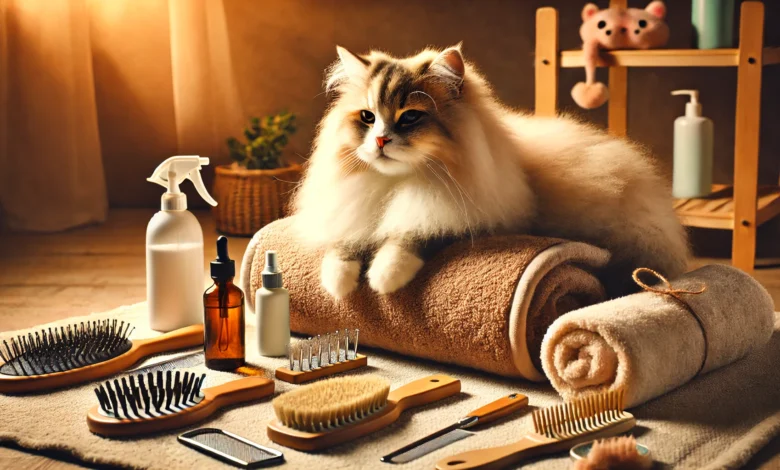
Grooming your cat may be considered one of the easiest tasks, but it plays a very important role in maintaining your feline friend’s health and happiness.
Grooming is also important because a regular grooming routine will not only keep your cat’s appearance neat, but it also serves to facilitate their general health by preventing many diseases.
Grooming may turn out to be a bonding experience for most owners, as it allows you to get closer to your cat while addressing its basic needs.
But where do you begin?
In this post, we shall explore how to establish a grooming routine for your cat that will benefit both of you.
Setting up a grooming routine for your cat might seem daunting at first, especially if your cat isn’t used to regular grooming sessions.
But don’t worry, we are here to guide you through every step.
From choosing the right grooming tools to handling mats and tangles, this guide covers everything you need to know.
Let’s get started by first understanding why a grooming routine is so important for your cat.
Table of Contents
Importance of a Grooming Routine
No matter the breed or age, regular grooming is an essential part of a cat’s life.
While cats are natural groomers, this often isn’t enough to keep their coat, skin, and nails in top shape.
By establishing a grooming routine, you’re helping your cat stay comfortable and healthy in the long run.
You’ll be amazed by how much it can improve their overall well-being.
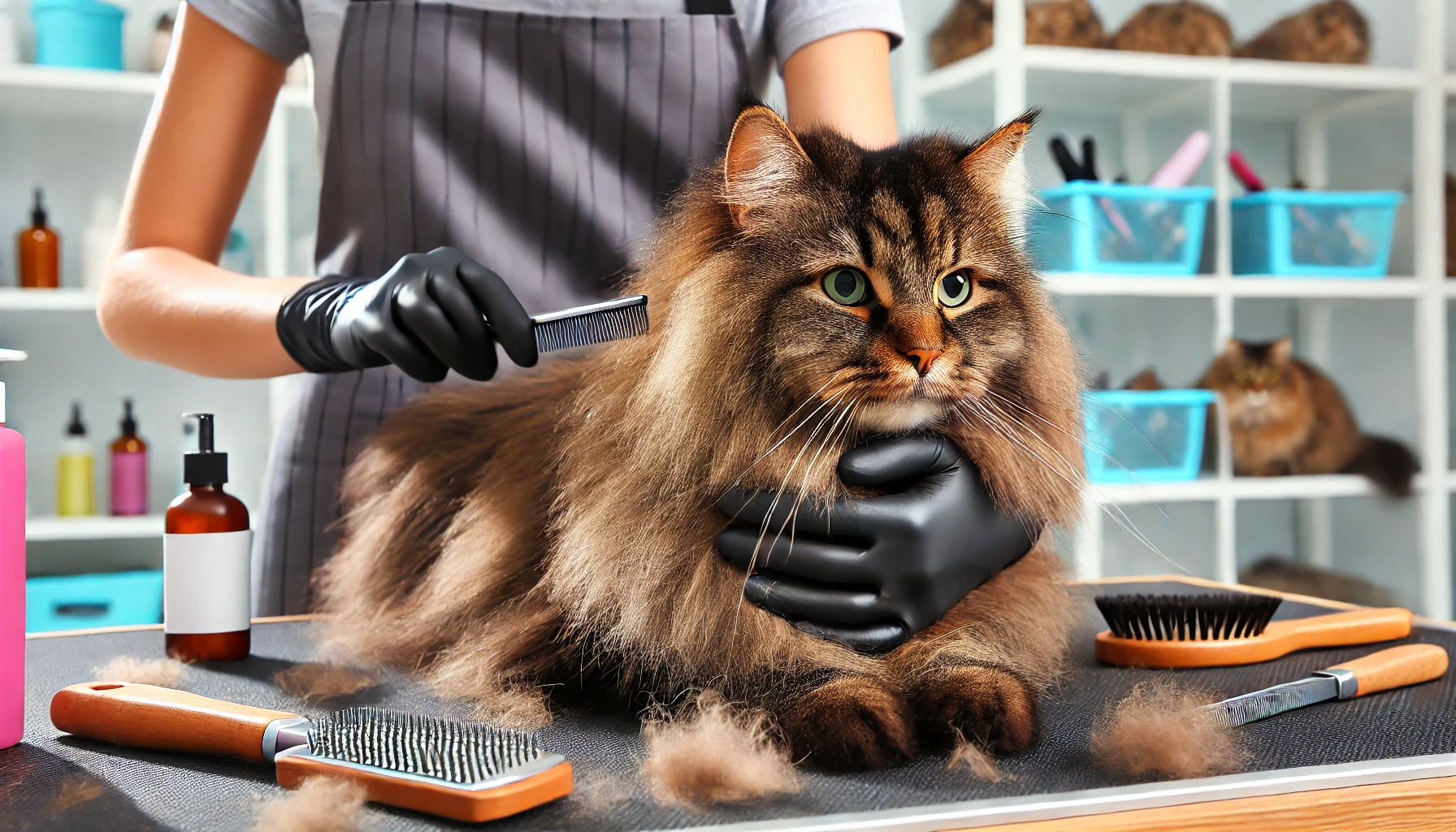
Why Cats Require Regular Grooming
Cats are naturally tidy animals and spend a significant part of their day grooming themselves.
However, some felines—especially those with longer coats—struggle to manage all that fur.
This can lead to mats, tangles, and sometimes skin problems.
A regular grooming routine helps remove loose fur, reduces shedding, and prevents hairballs, which are often caused by excessive self-grooming.
More than that, cats tend to miss areas that need attention, such as the back or under the legs, especially if they are older or overweight.
Grooming also gives you the opportunity to inspect your cat’s skin for lumps, bumps, or signs of parasites like fleas or ticks.
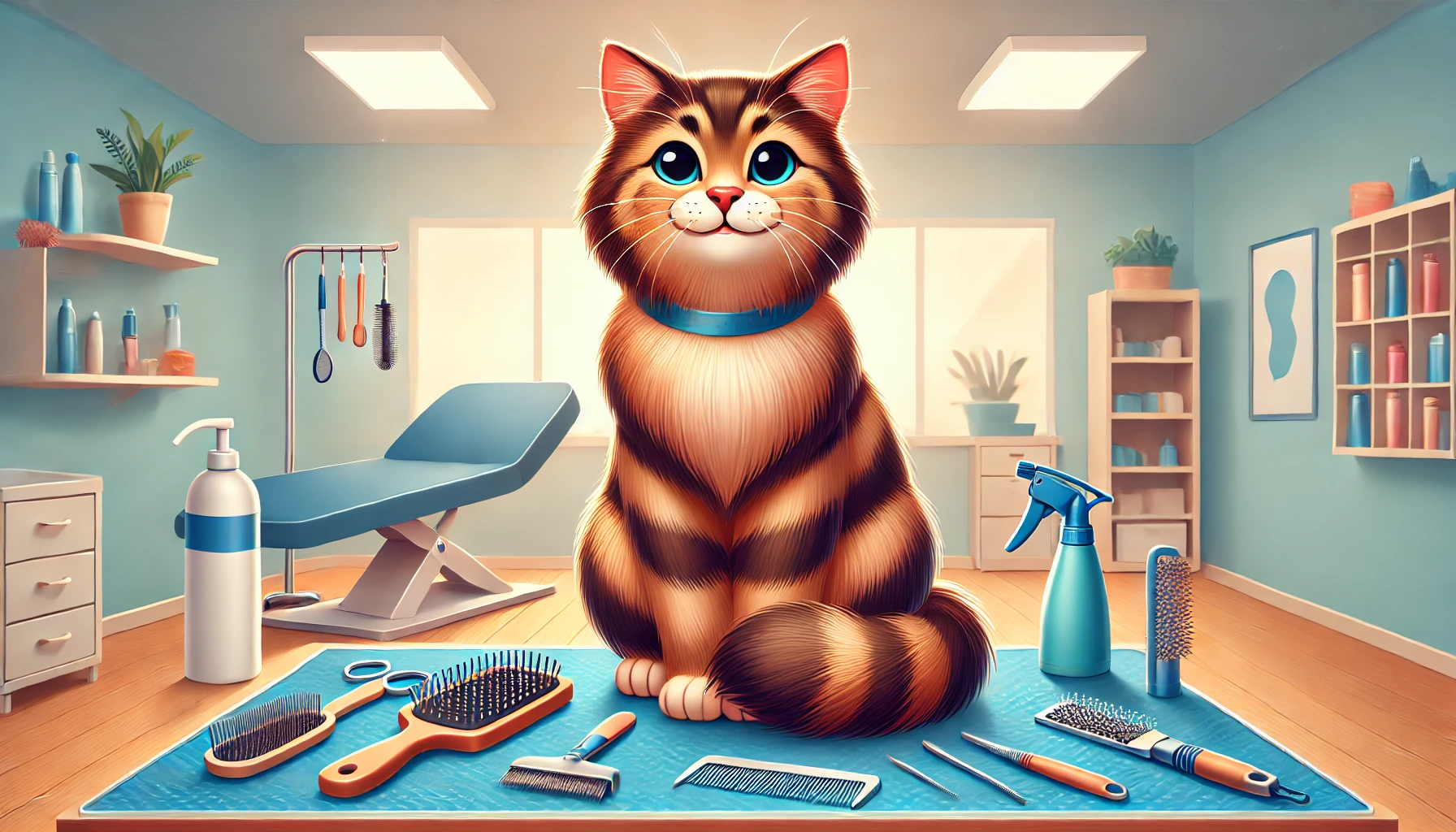
Benefits of a Consistent Grooming Routine
A regular grooming schedule greatly improves your cat’s comfort and quality of life.
Here are some key benefits:
- Reduces shedding: Regular brushing removes loose hairs, preventing them from ending up on your furniture or forming hairballs.
- Prevents mats and tangles: Cats with long fur are especially prone to mats, which can be painful and lead to skin issues.
- Improves circulation: Gentle brushing stimulates blood flow to the skin, promoting a healthier coat.
- Building bonds: Grooming is a great way to spend time with your cat and strengthen your bond.
Regular grooming helps your cat live a clean, healthy, and happy life.
The next step is to ensure you have the right tools for the job.
Regular grooming is crucial for your cat’s overall health, preventing disease, and fostering a closer bond between you and your feline companion.
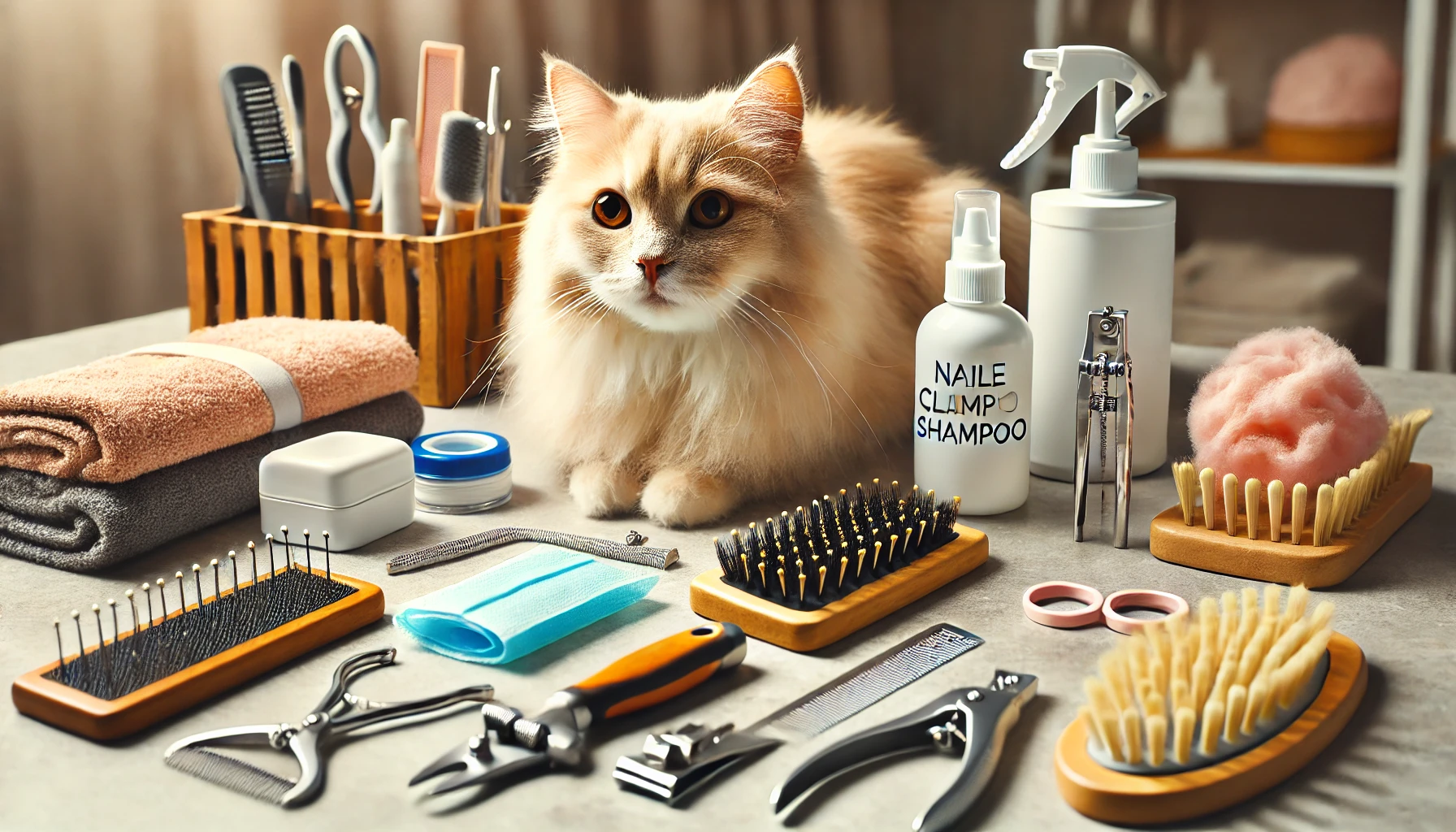
Must-Have Cat Grooming Equipment
Grooming your cat properly requires not only using the right tools but also using them appropriately.
Since all cats and their grooming needs differ, choosing the right tools for your cat’s coat type and grooming habits will simplify the grooming process for both you and your cat.
Using the proper grooming tools, you will be able to keep your cat’s fur, nails, and skin in excellent condition.
Let’s look at some of the necessary grooming tools every cat owner should possess.
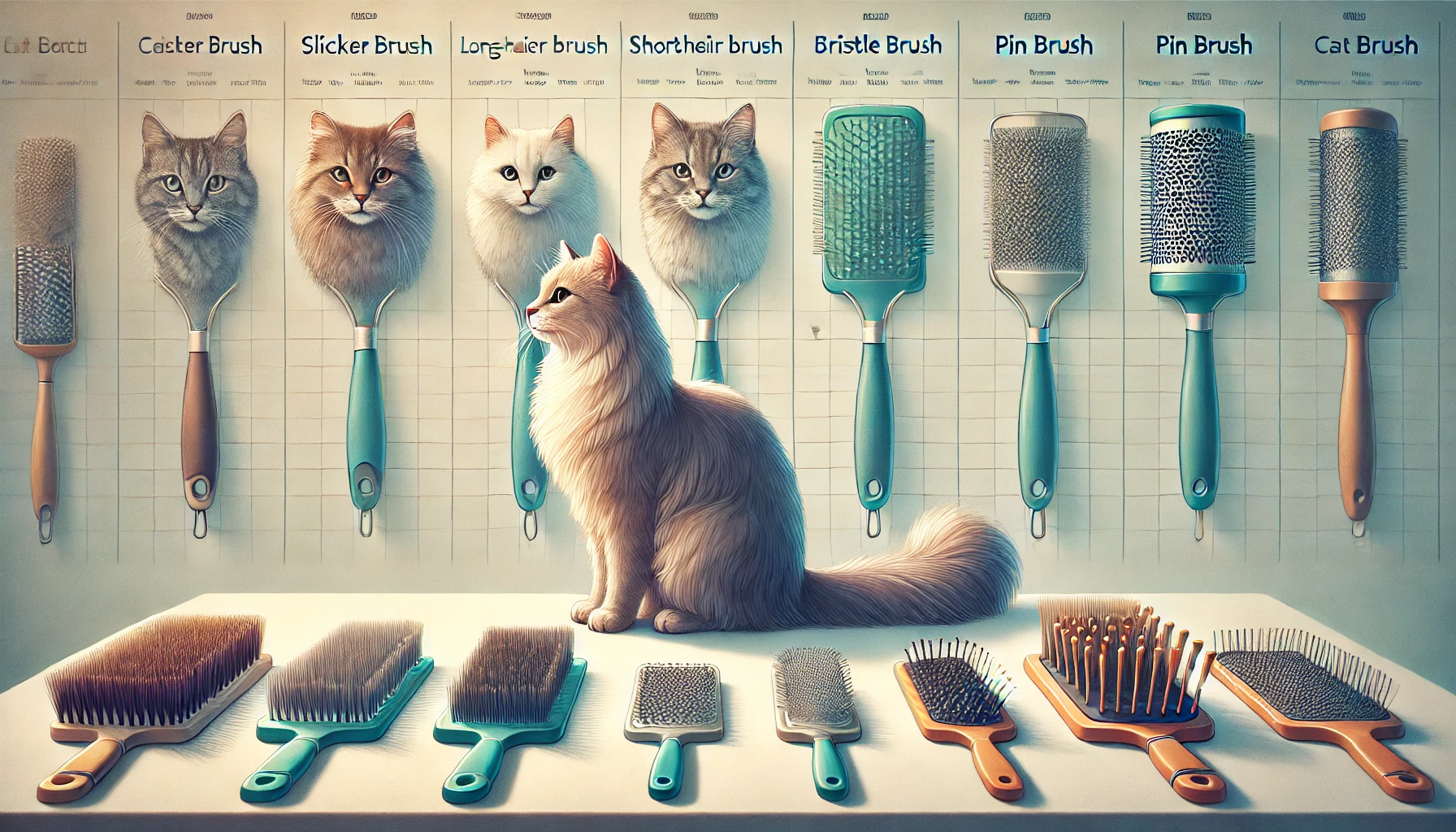
Choosing the Right Brush for Your Cat’s Coat Type
The type of brush you use depends on your cat’s coat.
Cats with short coats may need only a soft bristle brush, whereas long-haired cats require a comb or slicker brush to help prevent mats and tangles.
Here are the main types of brushes and their uses:
- Slicker brushes: Good for use on long-haired cats to remove loose fur and detangle the coat. These brushes work wonders at preventing mats.
- Bristle brushes: For short-haired cats, they remove loose hair and debris, making the coat smooth and shiny.
- Pin brushes: Most cats with medium-length fur benefit from these brushes as they remove loose fur without irritating the skin.
- Comb: A wide-toothed comb is useful for working out tangles and mats on long-haired cats, especially in areas prone to matting, like the belly or behind the ears.
Brush your cat regularly to keep their coat healthy and minimize loose hair in the house.
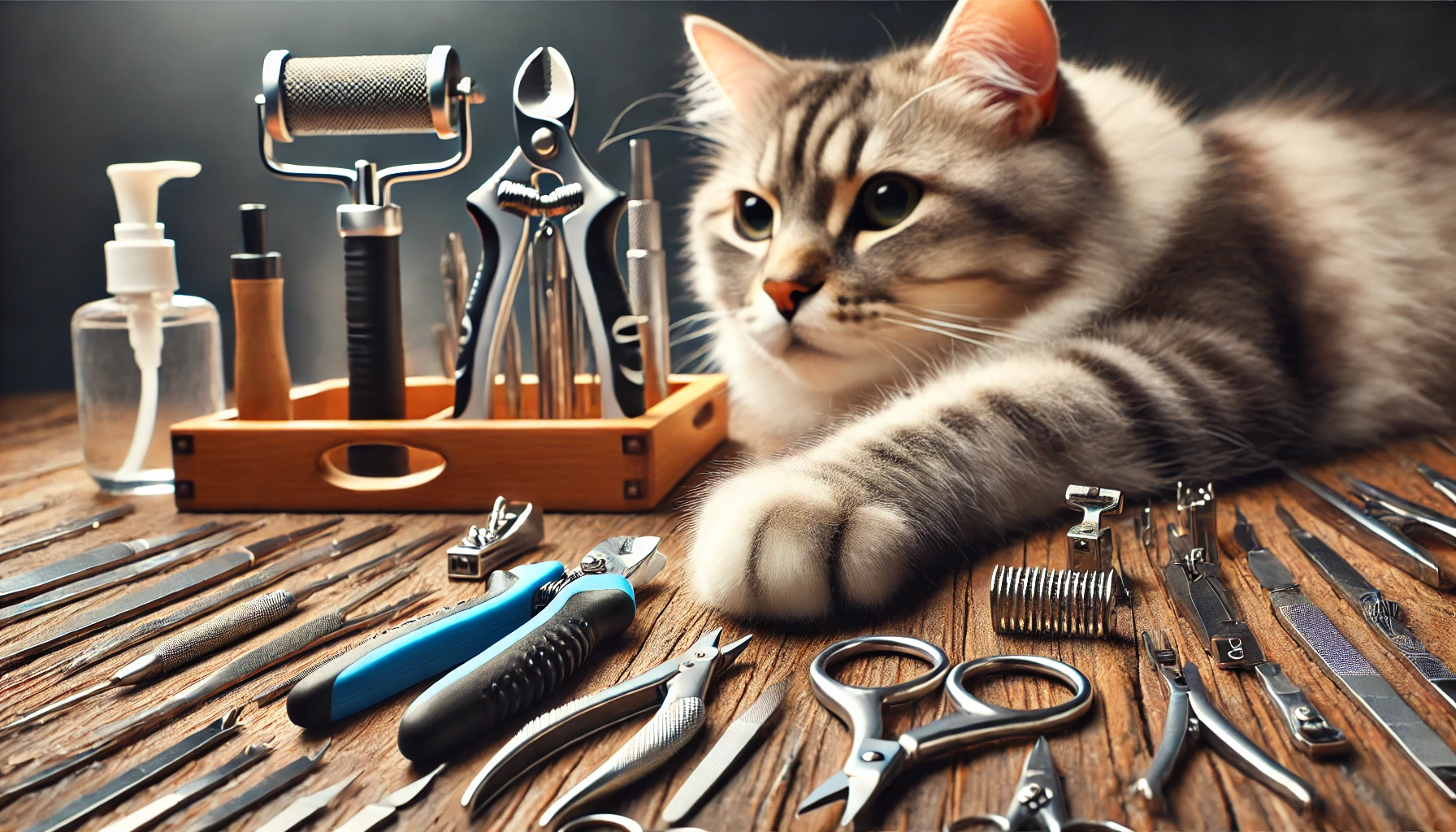
Clippers and Trimmers for Nail Care
Nail trimming is an integral part of grooming a cat, as overgrown nails can lead to discomfort and even health problems.
Here are some types of nail clippers to consider:
- Scissor-style clippers: Small, scissor-type clippers that are excellent for small to medium-sized nails.
- Guillotine-style clippers: These clippers have a hole where you insert the nail and squeeze the handle to clip. They are best for cats with thicker nails.
- Nail grinders: Some owners prefer using a nail grinder to gently file down the nails, reducing the chance of cutting too close to the quick.
Introduce nail trimming gradually with treats and positive reinforcement to reduce stress for both you and your cat.
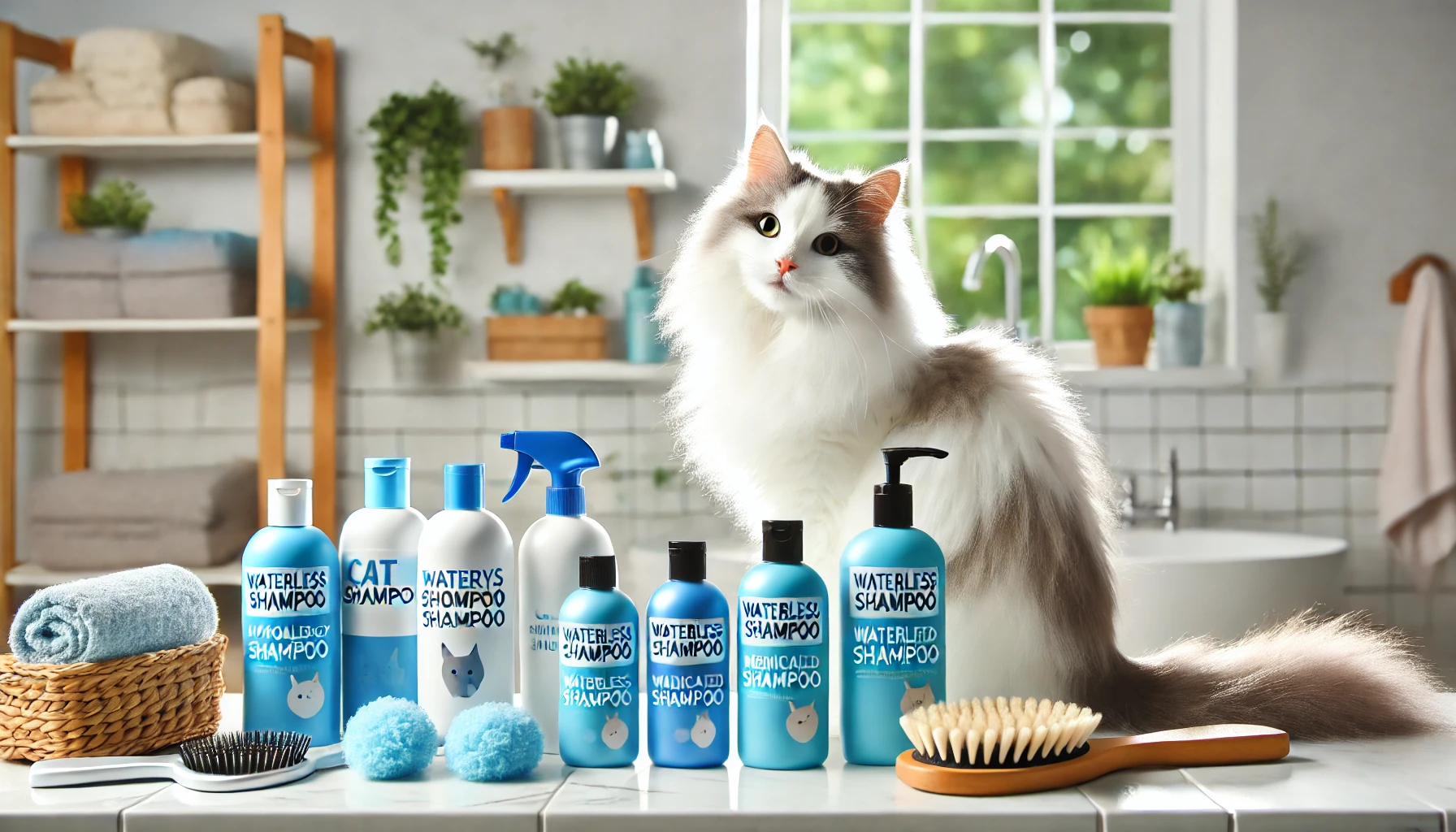
Shampoos and Conditioners Safe for Cats
While most cats are excellent at keeping themselves clean, a bath may be necessary if they get into something sticky or dirty.
It’s essential to use shampoos and conditioners specifically designed for cats, as human or dog shampoos can irritate their skin.
Here are some options:
- Hypoallergenic shampoo: Ideal for cats with sensitive skin or allergies.
- Waterless shampoo: If your cat dislikes water, a waterless or dry shampoo can freshen up their coat without the stress of a bath.
- Medicated shampoo: Useful for treating skin issues like dandruff or flea infestations, helping soothe irritation and treat underlying problems.
Remember, cats generally prefer to clean themselves, so baths should be occasional and only when necessary.
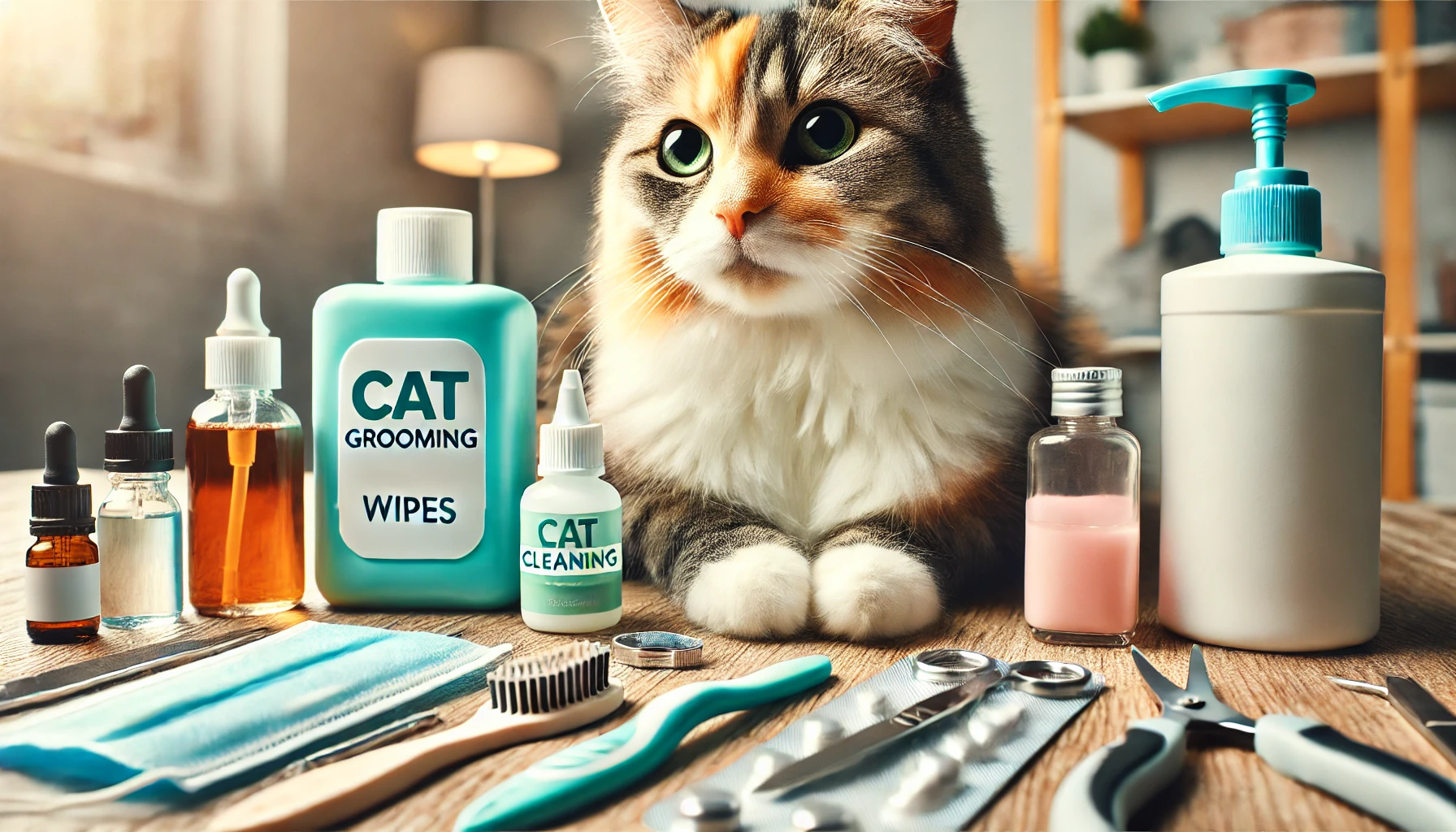
Additional Grooming Tools
Aside from brushes, clippers, and shampoos, there are a few other accessories that can help make grooming easier:
- Cat grooming wipes: These are perfect for quick clean-ups when a full bath isn’t needed. They are gentle on your cat’s skin and help remove dirt and allergens.
- Ear cleaning solution: Ear cleaning is another essential aspect of grooming. Use a cat-safe ear cleaning solution to gently clean your cat’s ears and prevent infections.
- Toothbrush and toothpaste: Dental hygiene is often overlooked, but brushing your cat’s teeth regularly can help prevent dental disease.
Having the right grooming tools will set you on the path to ensuring your cat’s coat, nails, and skin remain healthy and clean.
In the next section, we’ll provide a step-by-step guide on how to use these tools effectively when grooming your cat.
Having the right grooming tools for your cat’s coat type will make the grooming process easier, ensuring your cat stays clean, healthy, and comfortable.
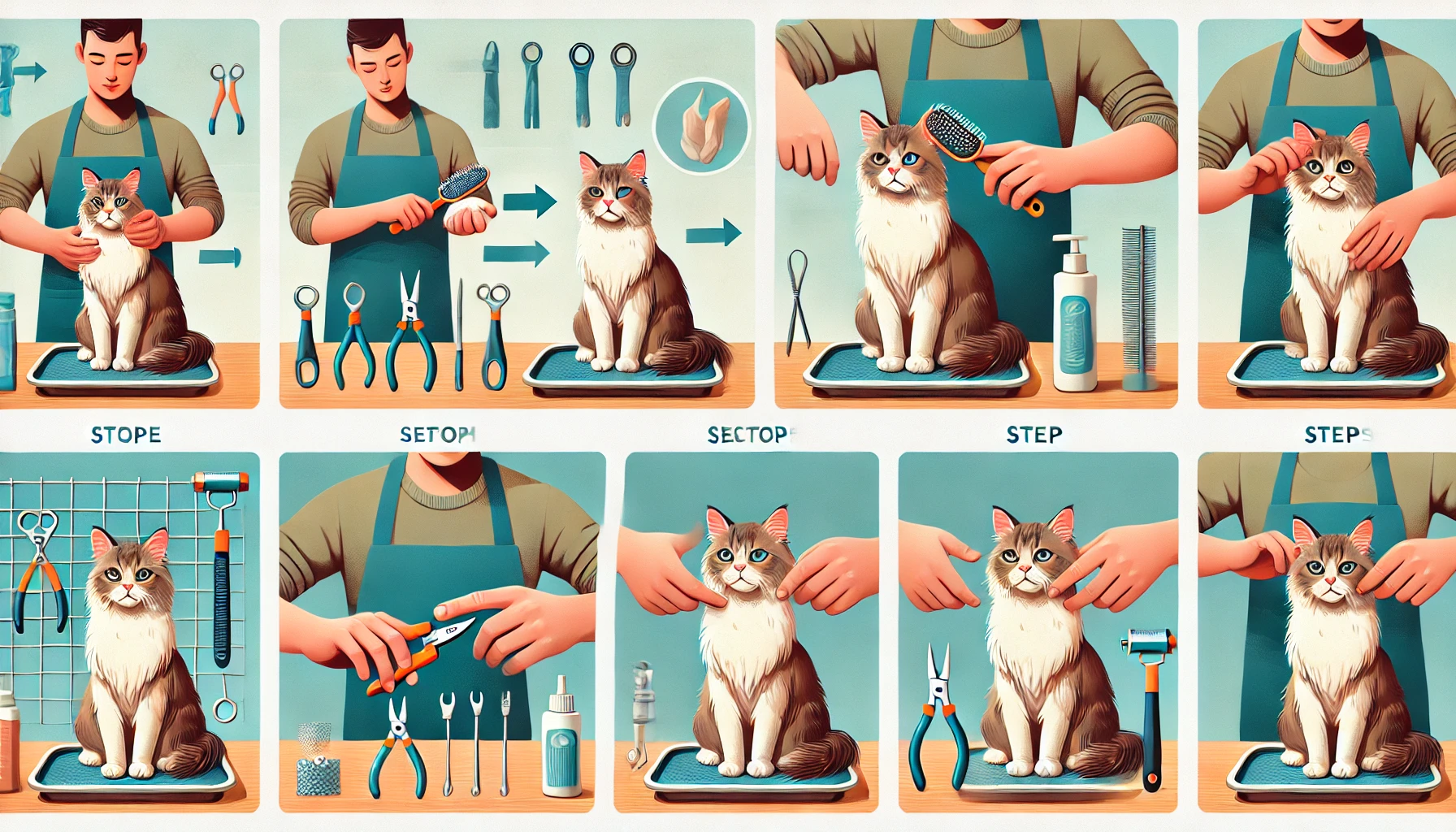
Grooming Your Cat Step by Step
Grooming your cat does not necessarily have to be an experience filled with terror for you or your feline friend.
As long as you follow a routine and proper technique, grooming can become an enjoyable time for both you and your cat.
From brushing to bathing, and even nail trimming, following a step-by-step guide will enable you to cover all aspects of grooming your cat effectively and efficiently.
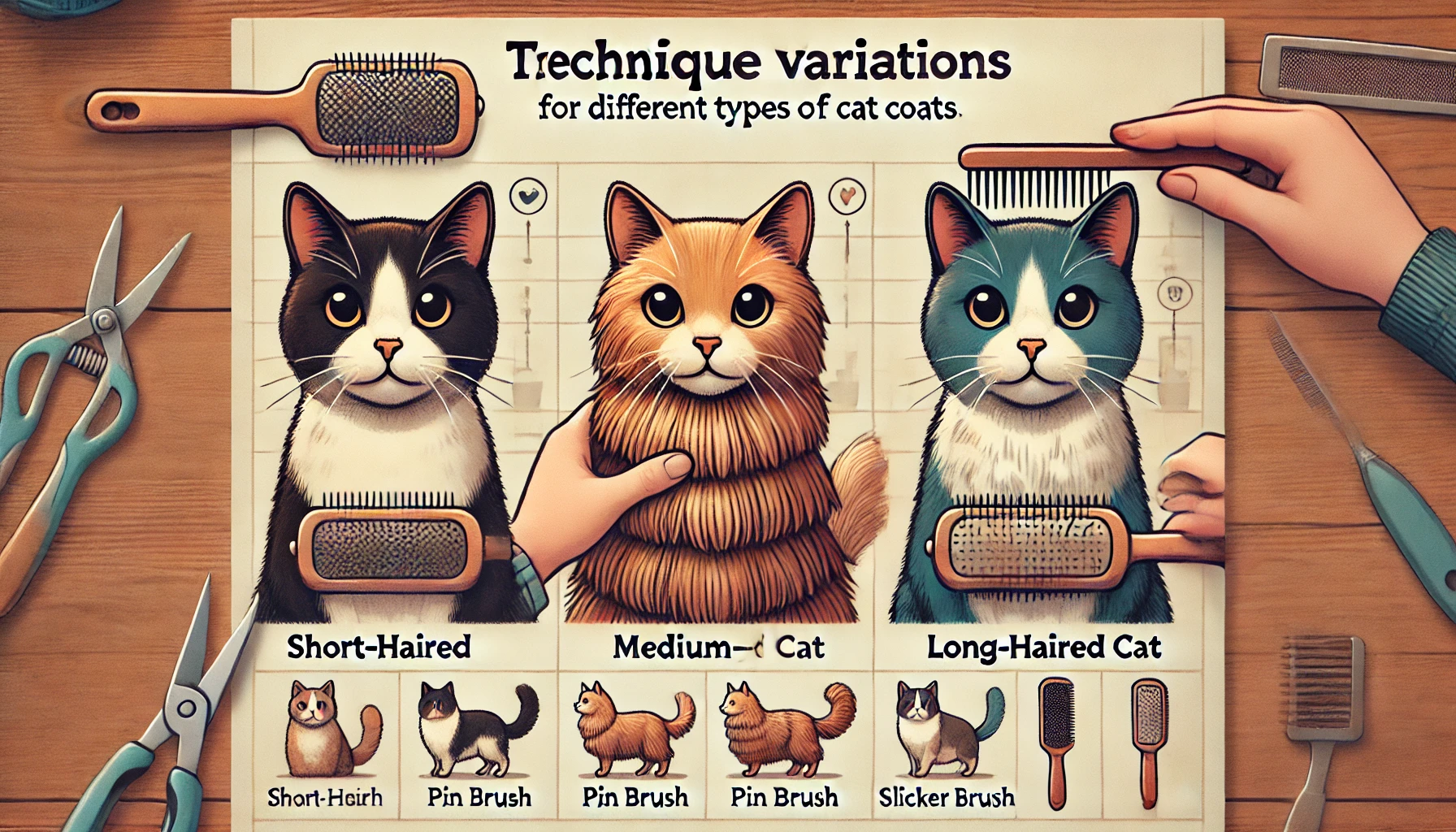
Technique Variations for Coats of Different Types
Brushing is perhaps the most important grooming activity for your cat.
It helps remove loose fur, reduce shedding, and stimulates natural oils responsible for a shiny and healthy coat.
The technique you use will vary depending on your cat’s coat type:
- Short-haired cats: Use a soft bristle brush or grooming mitt to remove loose hair. Always brush in the direction of hair growth to avoid discomfort. Short-haired cats usually only need brushing once a week.
- Long-haired cats: Use a slicker brush or wide-tooth comb to untangle knots and prevent matting. Focus on areas like the belly and under the legs. Long-haired cats should be brushed daily to prevent mats.
- Medium-haired cats: A pin brush works best. Section brushing will help you cover the entire coat and remove any tangles or debris.
Be gentle when brushing your cat, especially if they have mats or sensitive areas.
Offering treats during or after brushing can create a positive experience.
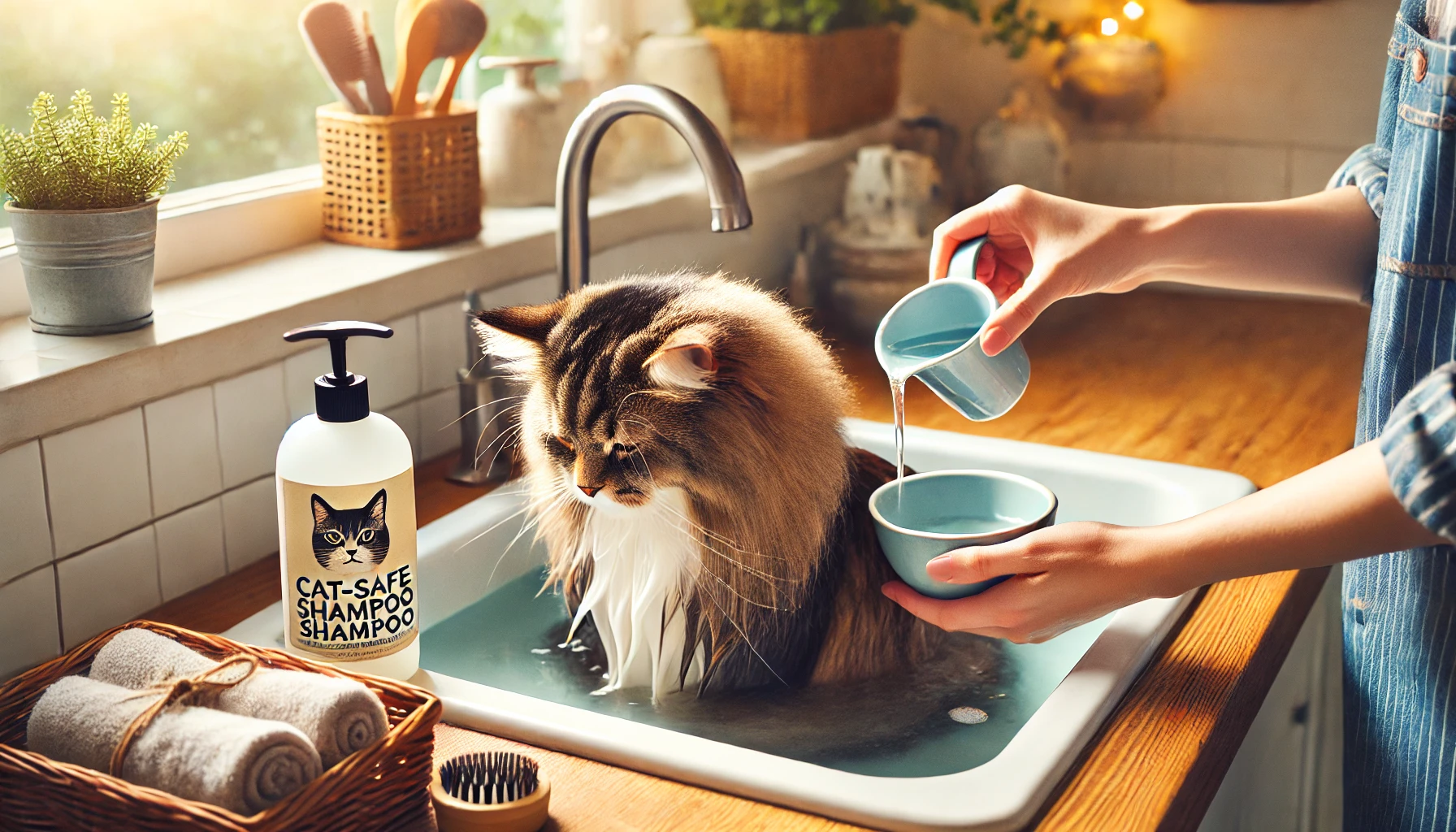
How to Bathe Your Cat Safely and Effectively
The prospect of bathing a cat may sound daunting, but it doesn’t have to be.
Here’s how to bathe your cat safely:
- Prepare the area: Use a sink or shallow tub lined with a non-slip mat to prevent your cat from slipping. Have towels, cat shampoo, and a cup for rinsing ready before you begin.
- Use lukewarm water: Ensure the water is warm but not hot. Fill the tub with just a few inches of water, enough to wet your cat without submerging them.
- Wet and lather: Use a cup to gently pour water over your cat’s body, avoiding the face. Apply a small amount of cat-safe shampoo and work it into the fur, focusing on areas that need cleaning.
- Rinse thoroughly: Rinse your cat’s fur until all soap is removed to avoid skin irritation.
- Dry gently: Wrap your cat in a towel and gently pat them dry. Avoid using a hairdryer as it may scare your cat.
Bathing should only be done when necessary, such as when your cat gets into something sticky or dirty.
Most cats will rarely need baths, as they clean themselves.
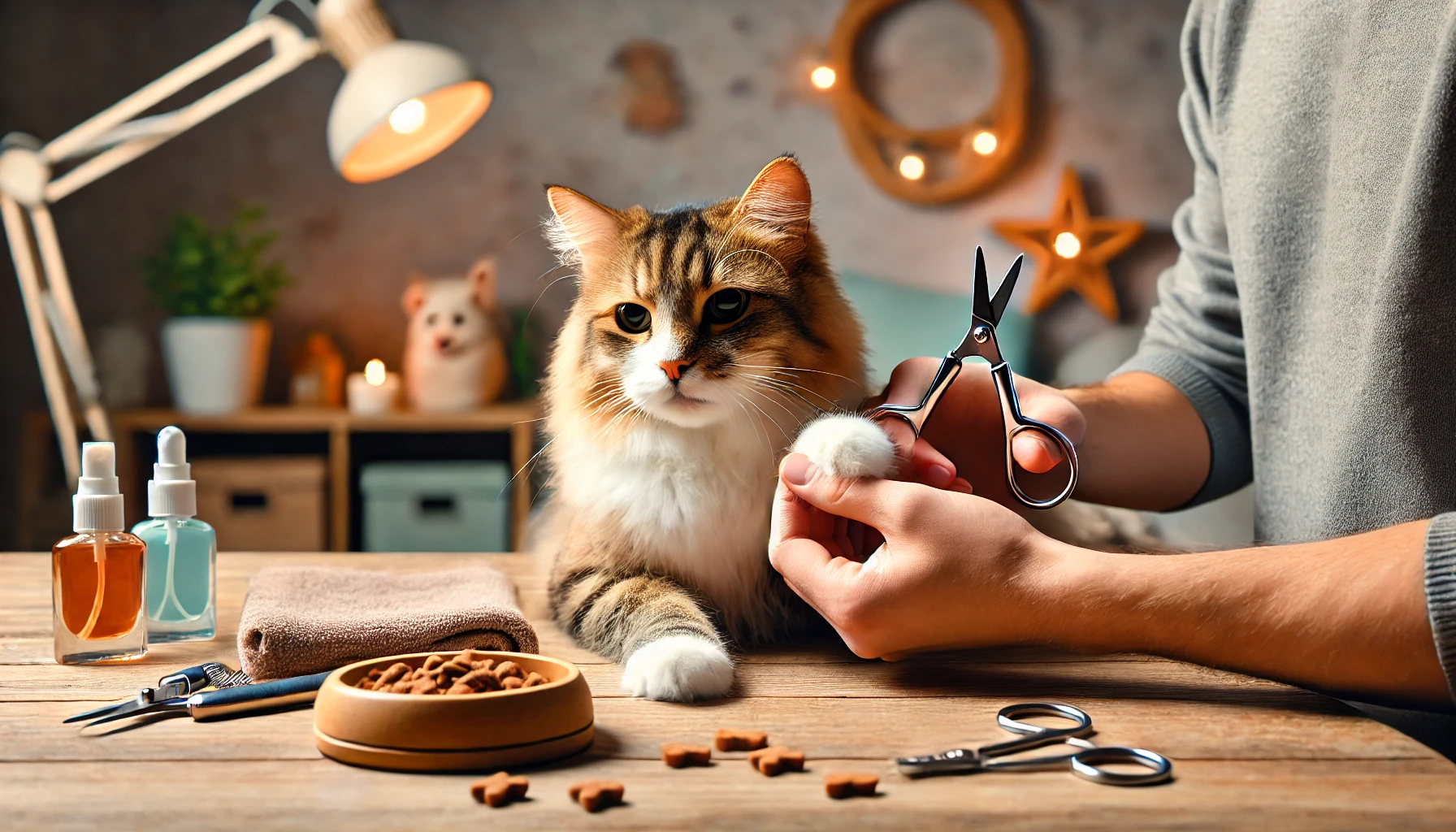
Stress-Free Nail Trimming
Trimming your cat’s nails is crucial but can be tricky since many cats aren’t accustomed to it.
Here’s how to make it easier:
- Start slowly: If your cat isn’t used to nail trimming, introduce the clippers gradually. Let them sniff the clippers and offer treats to form positive associations.
- Trim in a quiet area: Ensure the room is quiet and free of distractions. Hold your cat securely on your lap or a table.
- Trim carefully: Hold the paw, press on the pad to extend the nail, and use clippers to remove just the sharp tip. Be cautious not to cut the quick (the pink area inside the nail).
- Take breaks if needed: If your cat becomes restless, take a break and offer treats. It’s better to trim a few nails at a time to avoid causing stress.
With patience and practice, nail trimming can become a routine part of grooming without causing undue stress.
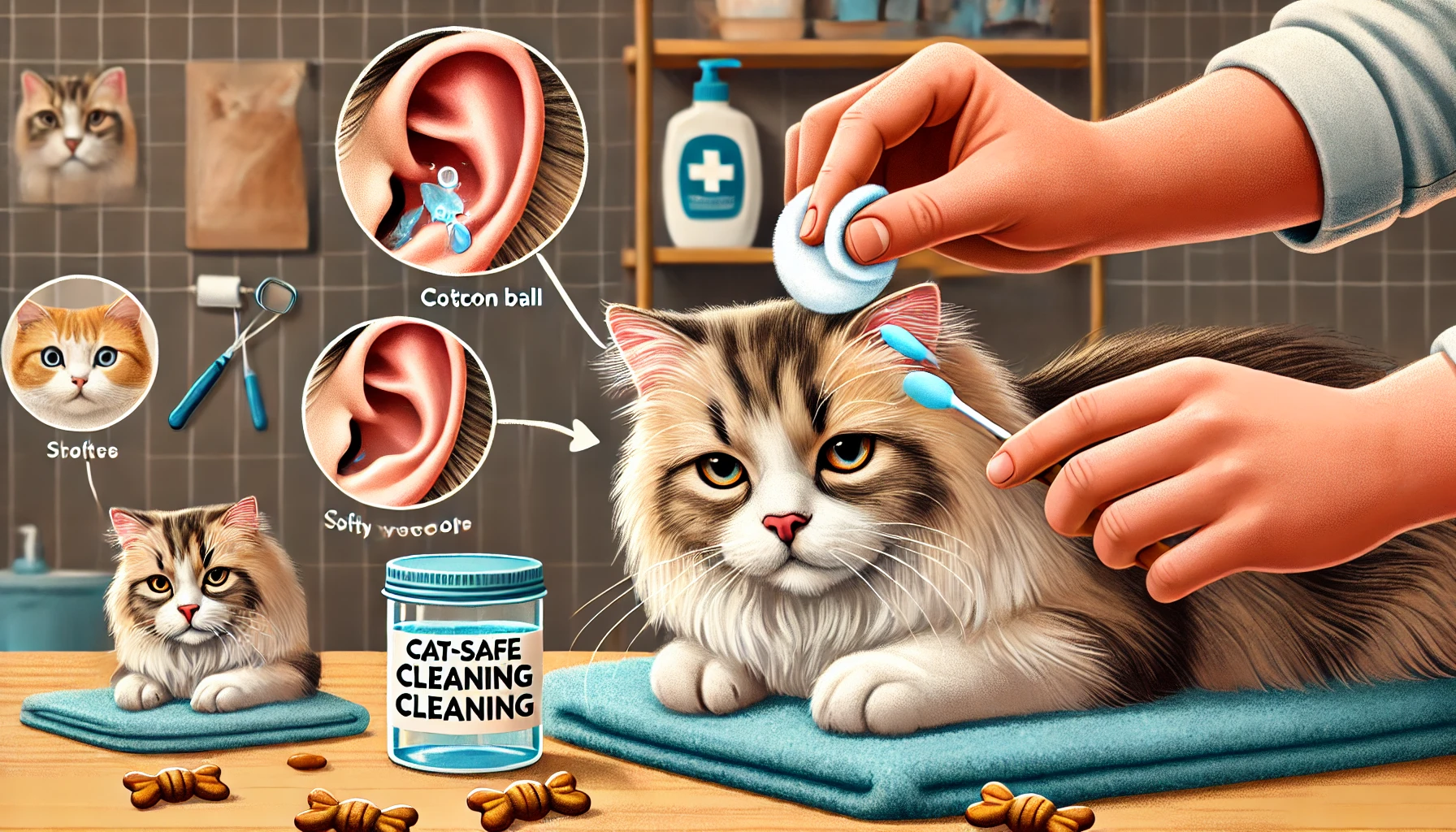
Cleaning Ears and Eyes
Cleaning your cat’s ears and eyes is essential for preventing infections and promoting overall health.
Here’s how to do it safely:
- Ear cleaning: Use a cat-safe ear cleaning solution and a cotton ball or pad to gently wipe the outer ear. Never insert anything deep into the ear canal. If you notice redness, discharge, or a foul smell, consult your vet.
- Eye cleaning: Use a soft, damp cloth to gently wipe away any discharge from around your cat’s eyes. Always wipe from the inner corner outward, using a clean part of the cloth for each eye to prevent spreading infections.
By regularly cleaning your cat’s ears and eyes, you can prevent common issues such as ear infections and tear staining, keeping your cat healthy and comfortable.
With these steps, your cat will be properly and effectively groomed.
When the right techniques are applied with patience, grooming sessions can become a fun way to bond with your cat.
In the next section, we’ll explore how to create a calm environment to make grooming easier for both you and your cat.
Follow a step-by-step approach to make grooming enjoyable and stress-free for both you and your cat. From brushing to bathing, using the correct techniques can improve your cat’s health and well-being.
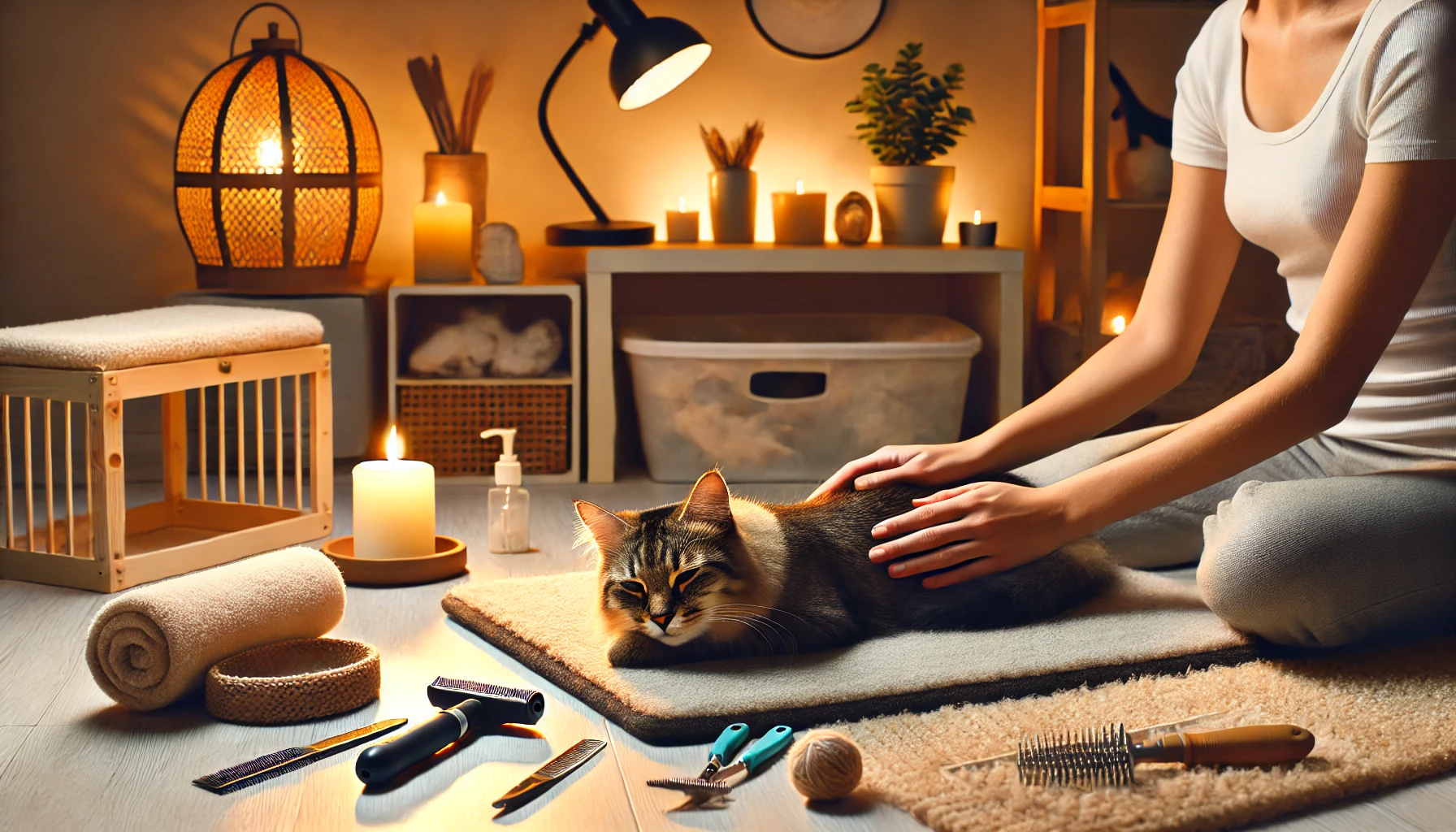
Creating a Relaxed Atmosphere for Grooming
Many cats consider grooming to be a rather stressful experience, especially when they are not used to it.
To make the process more enjoyable for both you and your cat, it’s important to create a relaxed and comfortable atmosphere.
By setting this up correctly and approaching it in the right way, you can help your cat feel safe and relaxed during the grooming process.
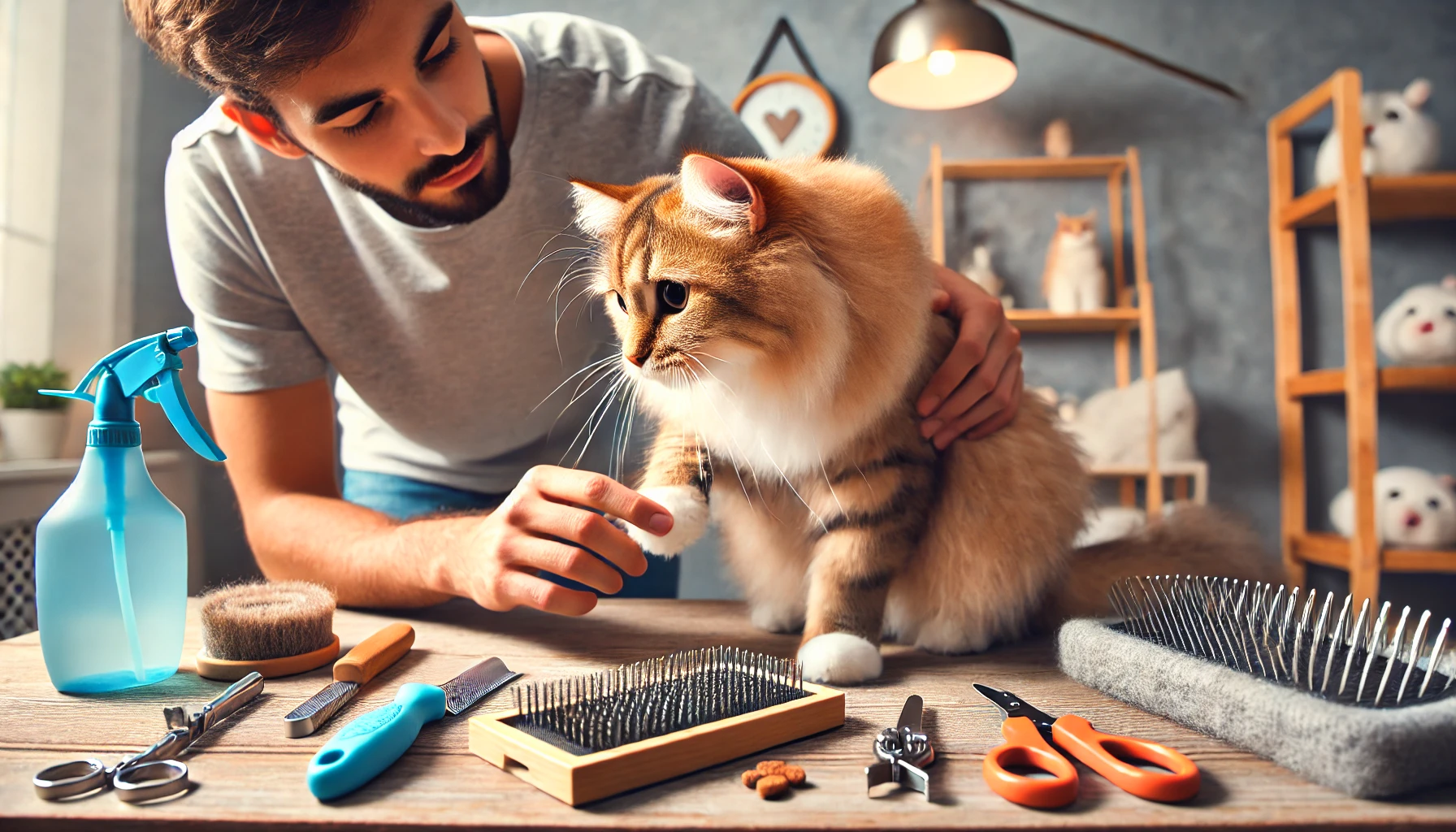
Getting Your Cat Ready for Grooming Sessions
Before you begin grooming, it’s essential to help your cat become accustomed to the activity.
Here are a few tips on how to prepare your cat:
- Start early: If possible, start grooming your cat while they are still kittens. Kittens are more adaptable to new experiences, and over time, they will learn that grooming is part of their routine.
- Gradually introduce grooming: Allow your cat to get used to grooming tools like brushes, clippers, and combs by letting them sniff and explore these items before beginning a grooming session. This helps reduce anxiety about new objects.
- Choose the right time: Make sure your cat is in a relaxed frame of mind, not playful or energetic. After a meal or nap, your cat is usually calmer and more docile.
- Keep sessions short: Especially in the early stages, keep grooming sessions brief to avoid overwhelming your cat. As they become more comfortable, you can gradually increase the length of each session.
Be gentle during grooming and let your cat get accustomed to everything at their own pace.
Reward them with treats for good behavior to make grooming a positive experience.
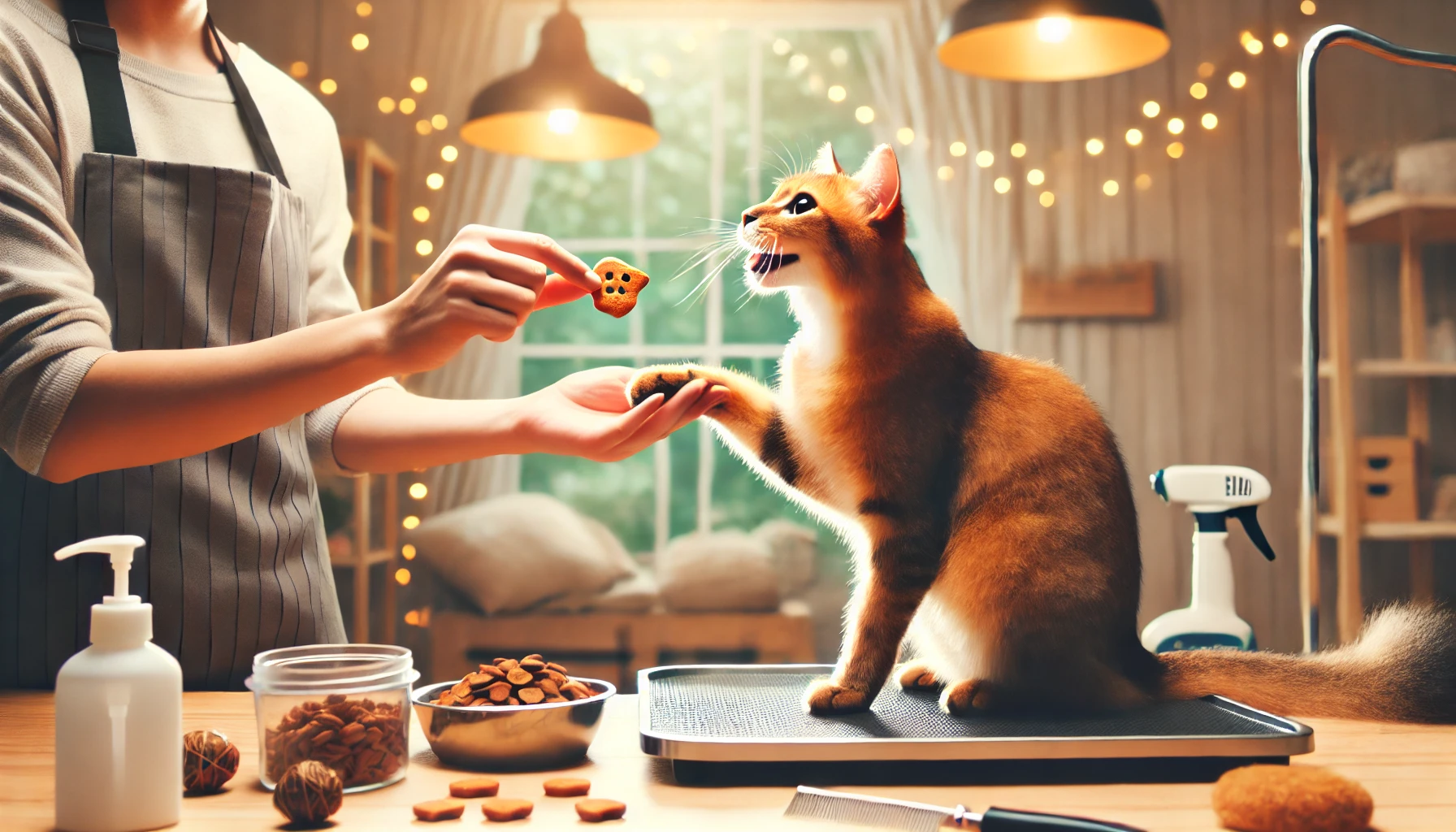
Using Treats and Positive Reinforcement
One of the most effective ways to make grooming enjoyable for your cat is through rewards.
This will help your cat associate grooming with positive experiences.
Here’s how you can use rewards to make grooming easier:
- Offer treats before, during, and after: Give your cat light treats before grooming to put them in a relaxed state. Reward them during the session for cooperating, and afterward as a “well done” gesture.
- Use praise and gentle petting: Along with treats, praise your cat verbally and gently pet them during grooming. This can help your cat relax and enjoy the experience.
- Be consistent: Use the same treats and words of encouragement during each grooming session. Cats thrive on routine, and consistency will help them understand that grooming is a safe and positive activity.
This approach not only makes grooming a more pleasant experience but also helps build trust between you and your cat, making future sessions easier.
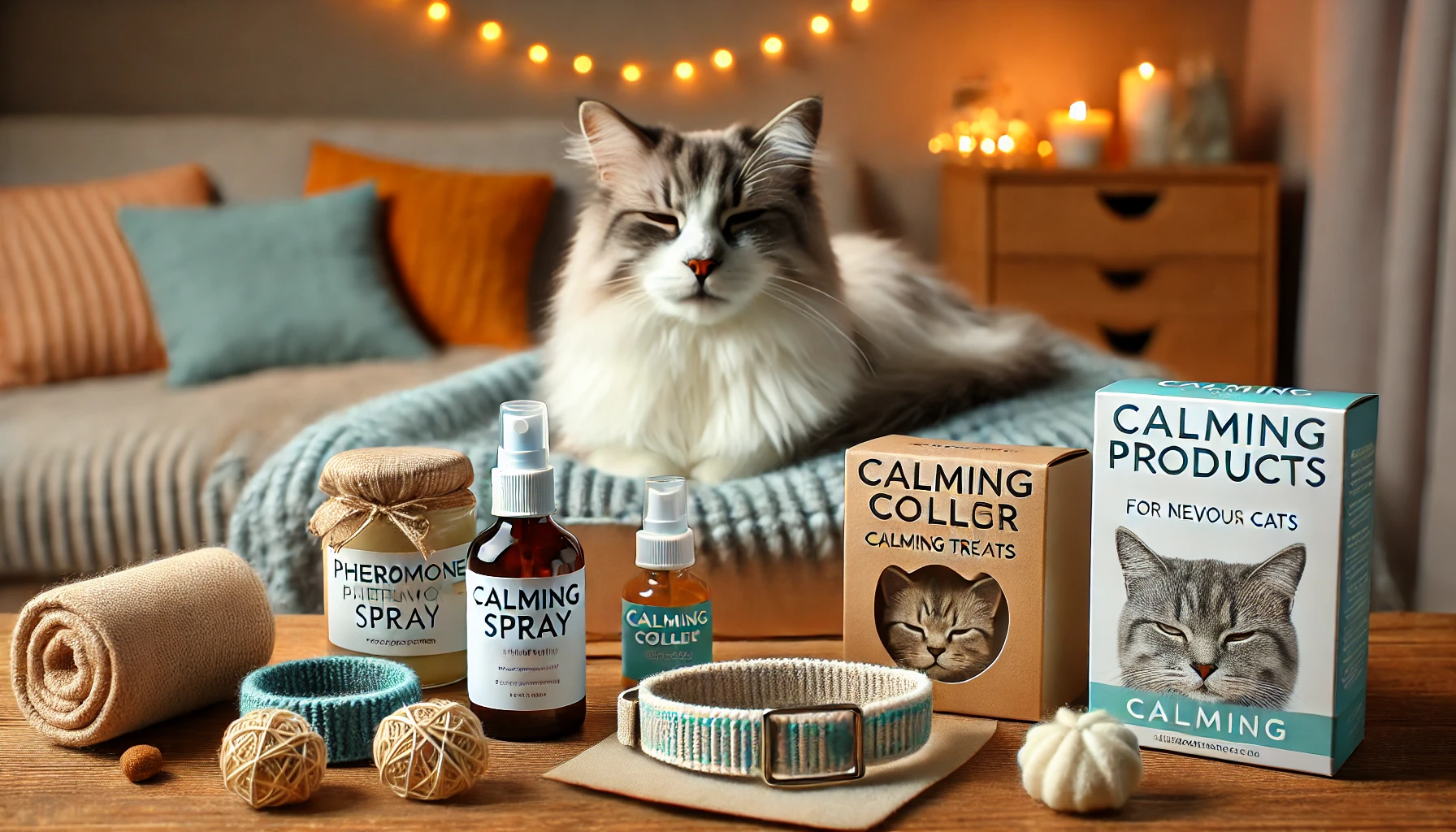
Calming Products for Nervous Cats
Some cats are naturally more anxious or skittish, making grooming more challenging.
For these cats, calming products can be helpful in reducing stress.
Here are some options:
- Pheromone sprays: Pheromone sprays mimic the natural calming pheromones produced by cats. Spraying the grooming area or using a diffuser can help create a more relaxed environment.
- Calming collars: These collars release pheromones continuously and can help keep your cat calm during grooming and other stressful situations.
- Calming treats or supplements: Specially formulated calming treats or supplements containing natural ingredients like L-theanine or chamomile can help relax your cat before a grooming session.
- Music or white noise: Playing soft music or white noise can provide a soothing environment for your cat. Many cats appreciate gentle background sounds that mask other distracting noises.
It’s important to combine calming products with gentle handling and positive reinforcement for the best results.
By creating a calm and comfortable environment, you can make grooming a positive experience for your cat.
The next section will cover common grooming challenges and how to handle them effectively.
Set the stage for a calm grooming experience by creating a relaxed environment with positive reinforcement, treats, and patience.
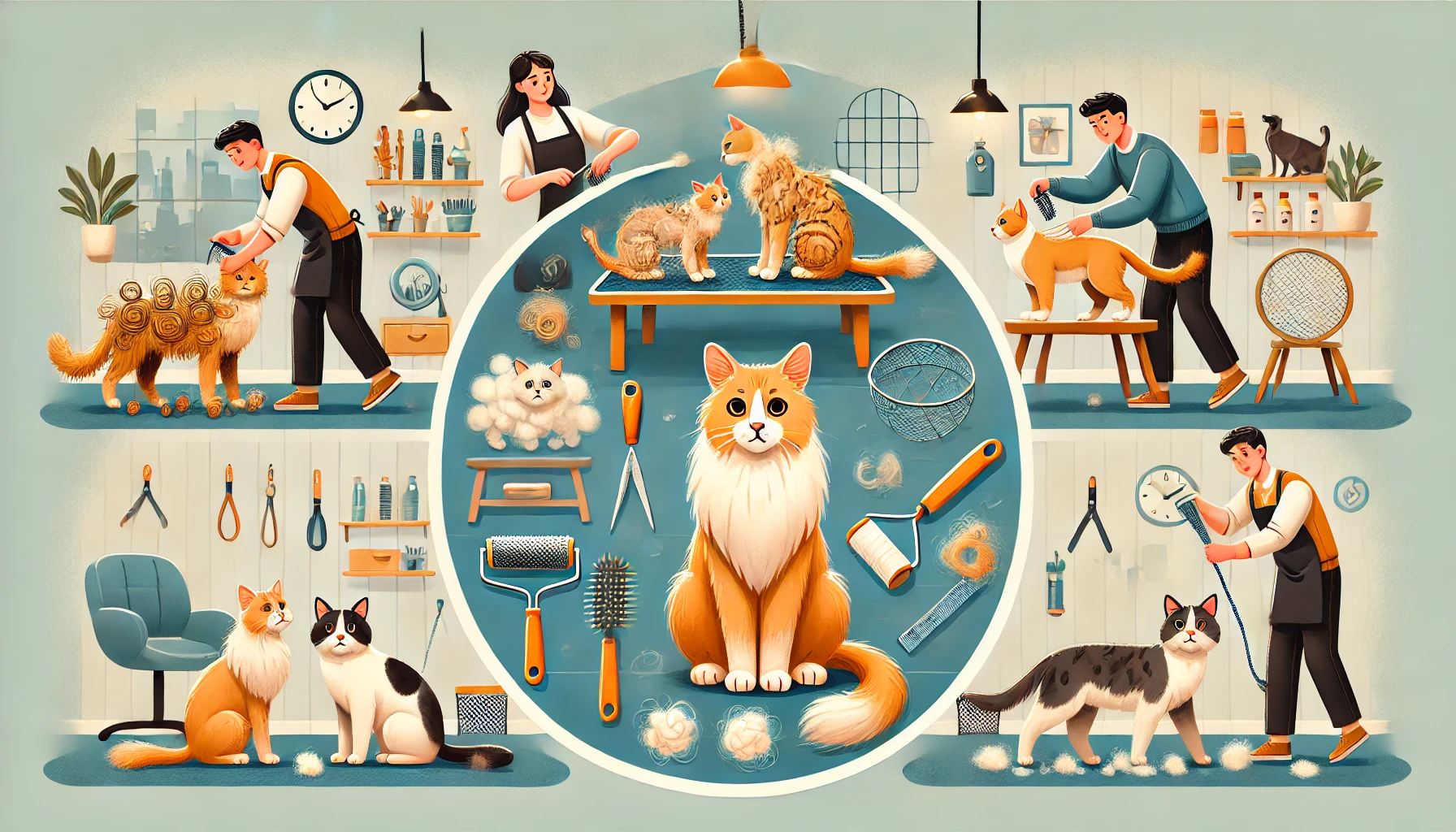
Managing Common Grooming Challenges
Even with the best intentions and a well-prepared grooming routine, grooming your cat may pose some challenges.
Whether it’s dealing with stubborn mats or managing anxiety, there are several common grooming issues that cat owners face.
Understanding how to handle these challenges can make the grooming process easier for both you and your cat.
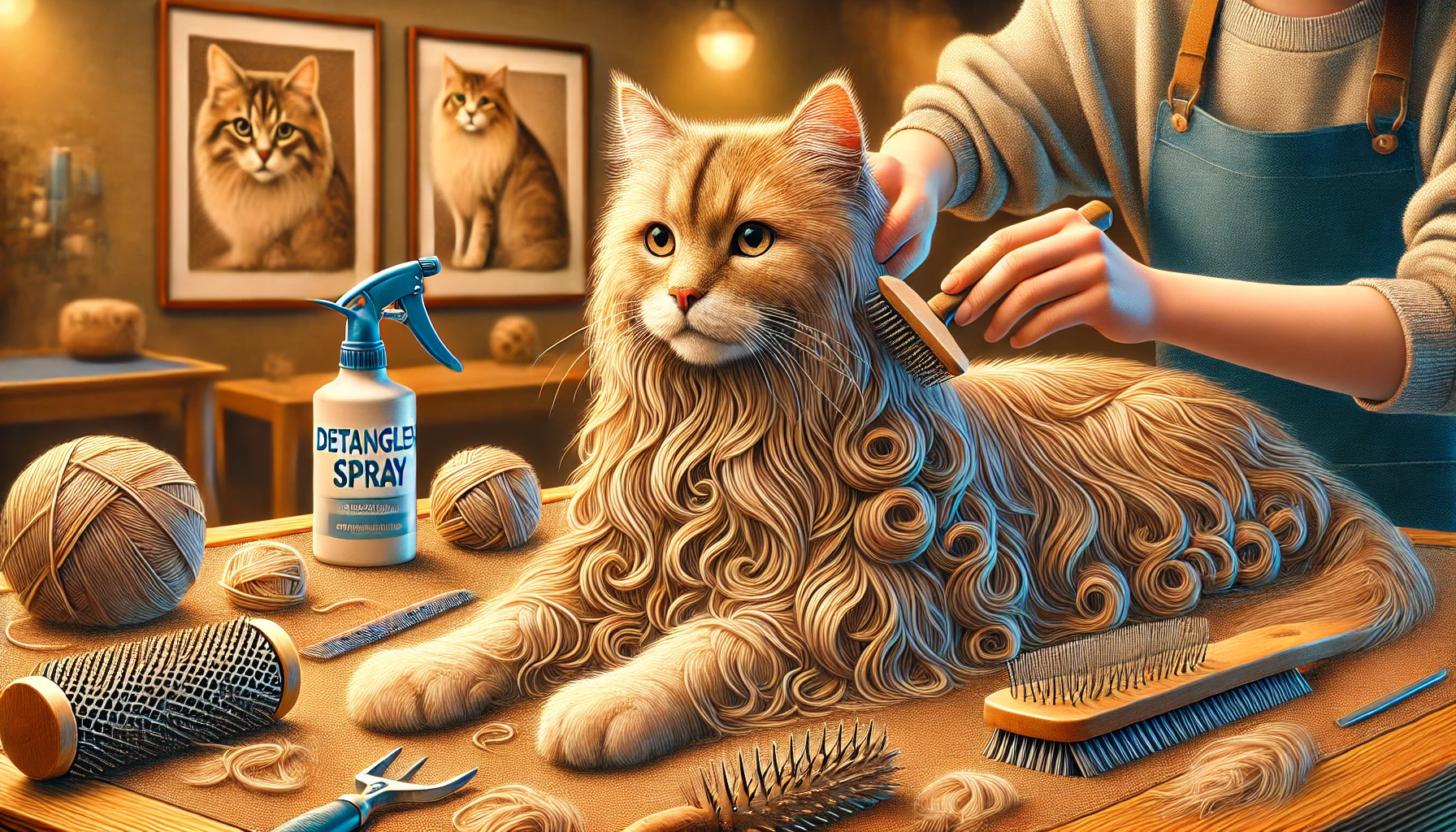
Dealing with Mats and Tangles
Mats and tangles are common, especially in long-haired cats.
These clumps of hair can be painful and may even lead to skin infections if not treated.
Here’s how to handle mats and tangles effectively:
- Prevention is key: Regular brushing is one of the best ways to prevent mats from forming. Long-haired cats should be brushed daily to keep their coats free of tangles.
- Use a detangling spray: If your cat has mats, you can make the fur easier to manage by applying a cat-safe detangling spray.
- Begin gently: Use a wide-toothed comb or a mat splitter to carefully work through the tangles. Always start from the ends of the fur and work your way up to avoid pulling on your cat’s skin.
- Don’t force it: If a mat is too tight or close to the skin, avoid pulling it out. You can use blunt-nosed scissors to carefully cut it out, but for severe mats, consult a professional groomer or vet.
Always work gently when removing mats, and give your cat breaks if they seem uncomfortable.
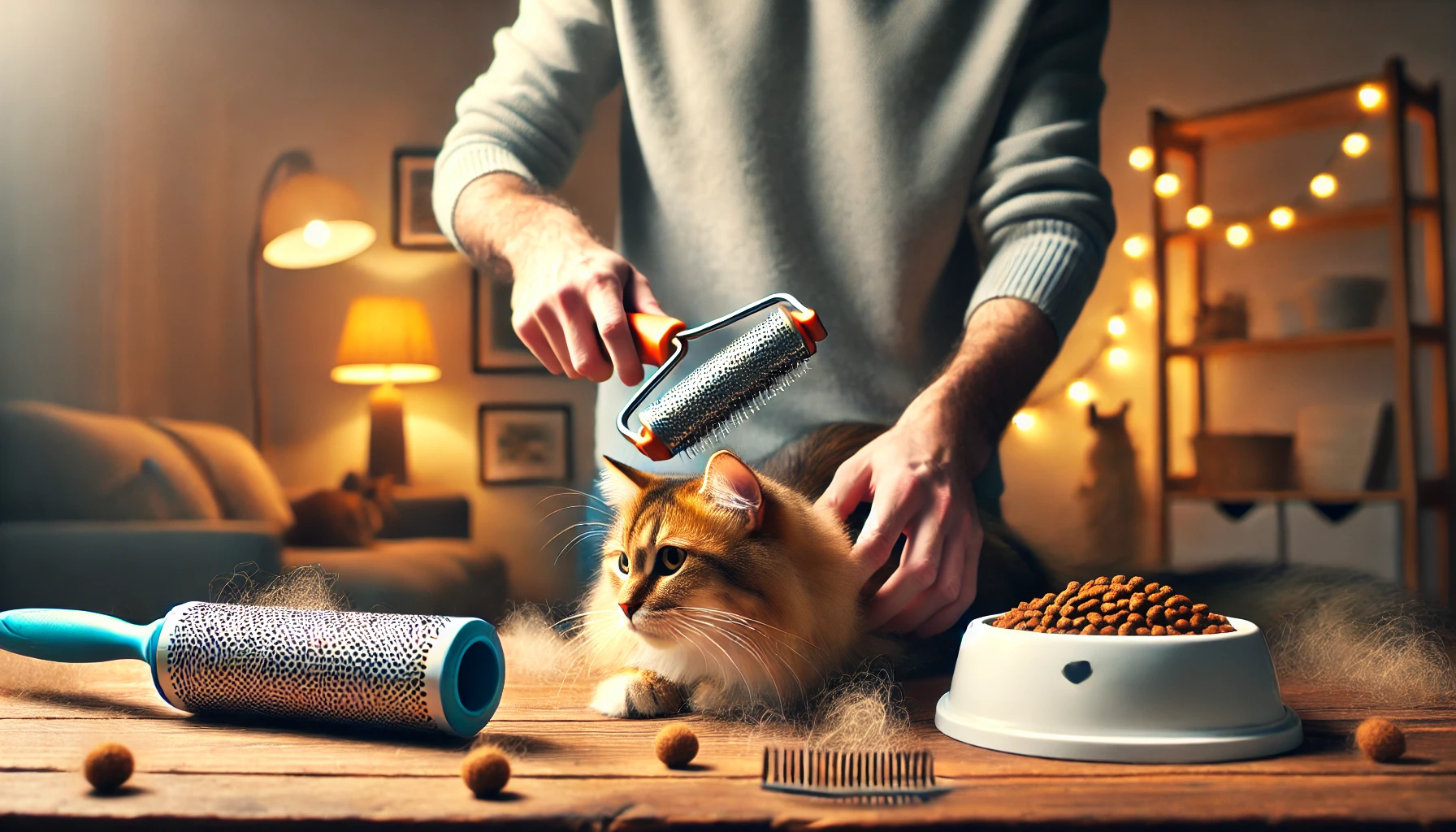
How to Address Shedding and Hairballs
Shedding is a natural process for cats, but if not managed, it can lead to hairballs.
Here’s how you can reduce shedding and minimize hairballs:
- Brush regularly: Regular brushing helps remove loose fur before your cat can ingest it during self-grooming. This is especially important for long-haired cats.
- Use a de-shedding tool: Tools like the Furminator are designed to reach the undercoat and remove loose hair, which significantly reduces shedding.
- Provide a proper diet: A diet rich in omega-3 fatty acids promotes a healthy coat and reduces shedding. Consult your vet if you’re considering adding supplements.
- Hairball remedies: There are cat-specific hairball remedies, such as gels or treats, that help pass ingested hair through the digestive system, reducing the likelihood of hairballs.
By managing shedding, you can keep your home fur-free and reduce the frequency of hairballs.
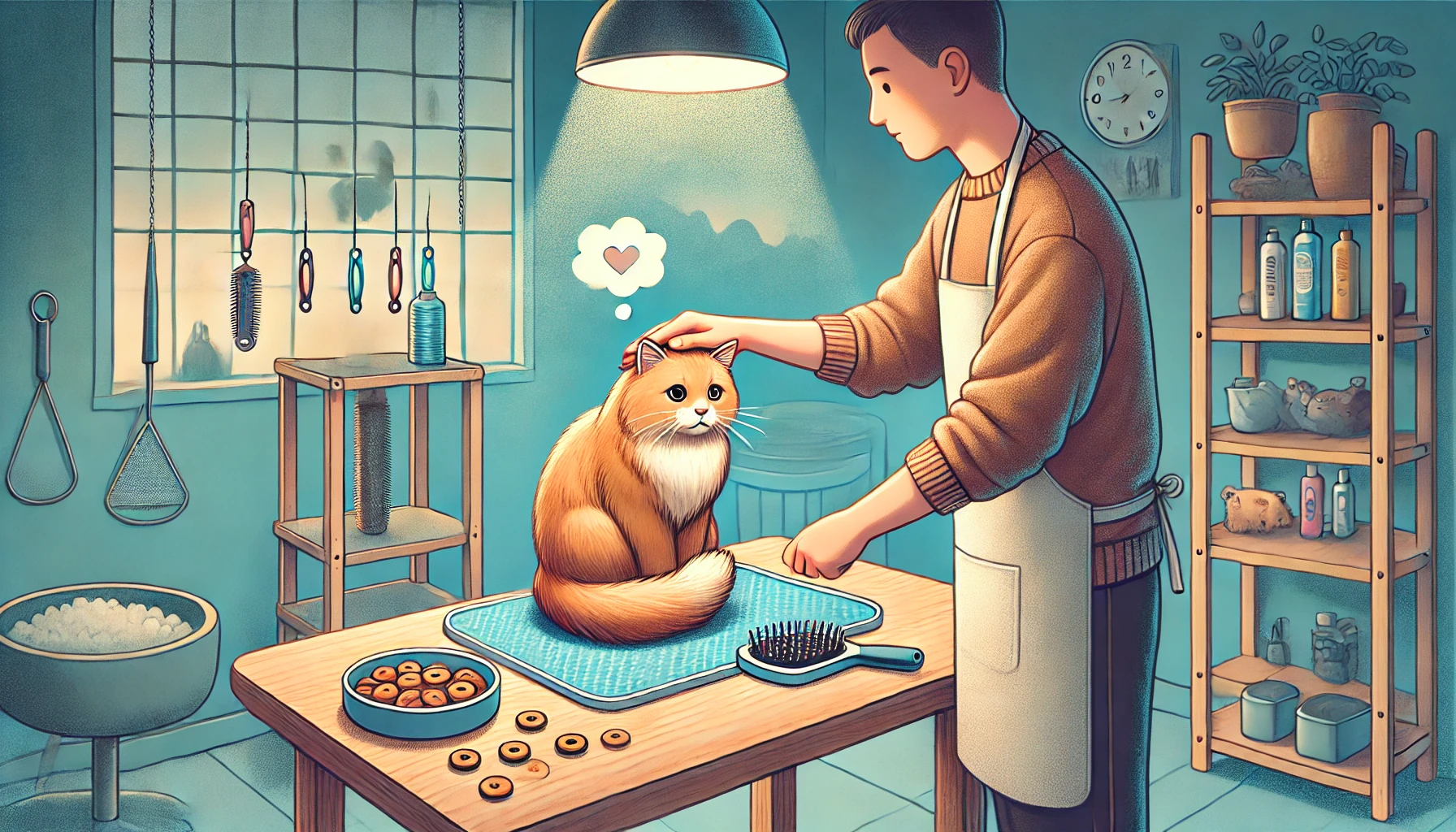
Managing Grooming-Related Anxiety
Some cats are naturally more anxious, making grooming stressful.
Here’s how you can help alleviate your cat’s anxiety during grooming:
- Go easy: If your cat is nervous, don’t rush the grooming process. Start with short sessions and gradually increase the time as your cat becomes more comfortable.
- Use calming products: Pheromone sprays, calming collars, or treats (as mentioned earlier) can help relax your cat before grooming.
- Make it a positive experience: Reward your cat for good behavior with treats, praise, and gentle petting during the grooming session.
- Consult a vet: If your cat is severely anxious, consult your vet for advice. In some cases, a vet may recommend professional grooming or prescribe calming medications.
By understanding and addressing your cat’s anxiety, you can make grooming sessions less stressful and more effective.
Managing these common grooming challenges will make the process easier and more pleasant for both you and your cat.
With a little patience, the right tools, and a calm approach, grooming can become a beneficial routine that enhances your cat’s health and well-being.
Grooming challenges like mats, shedding, and anxiety can be easily managed with the right tools and techniques.
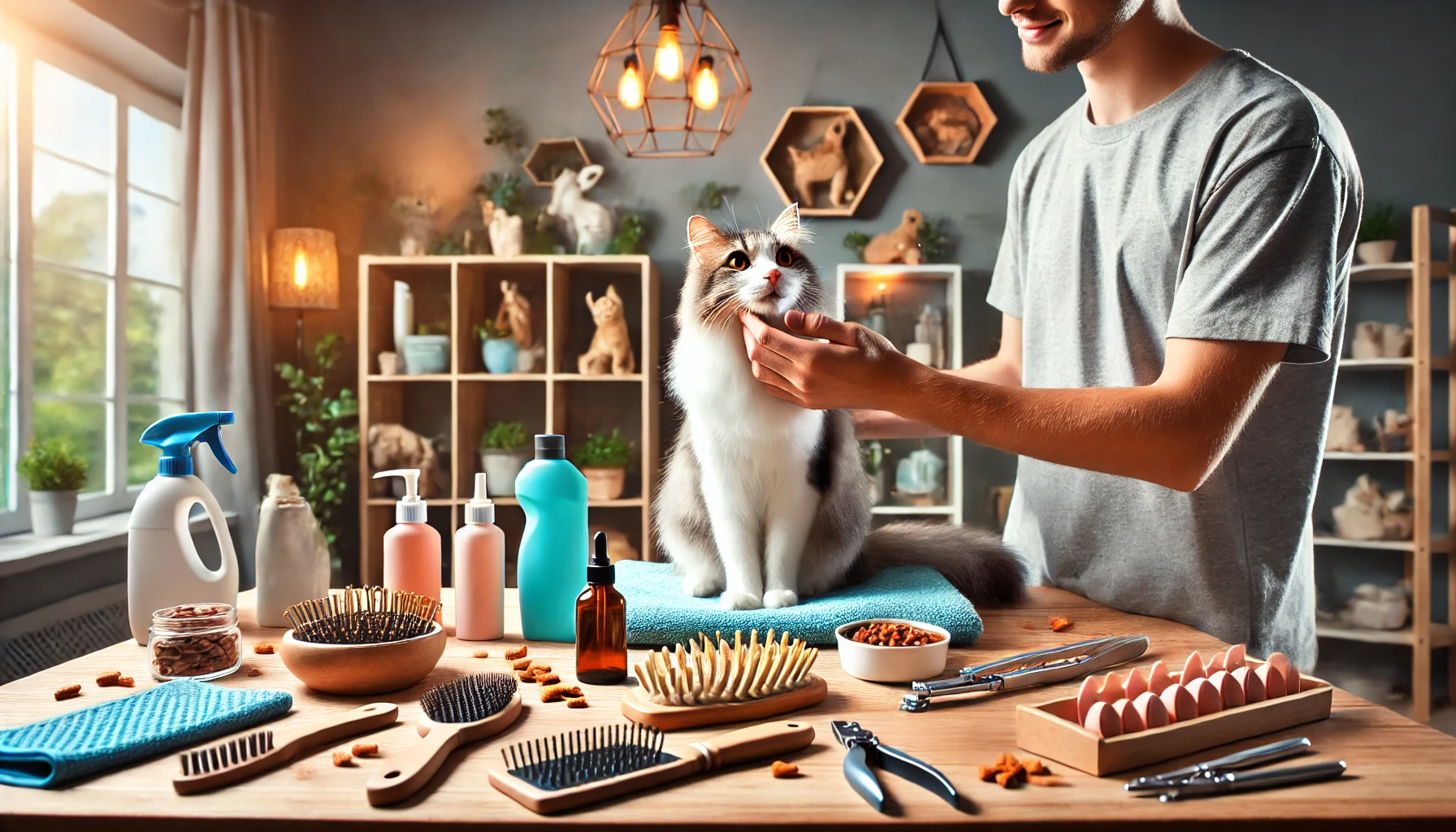
Overview: How to Properly Set a Grooming Routine for Your Cat
Grooming, apart from being necessary for the well-being and good health of your cat, helps establish a close relationship between you and your pet.
With the proper tools, techniques, and a calm approach, it can be made enjoyable and stress-free for both you and your cat.
In this article, we explored different aspects of grooming your cat, including brushing, bathing, handling mats, managing shedding, and dealing with anxiety.
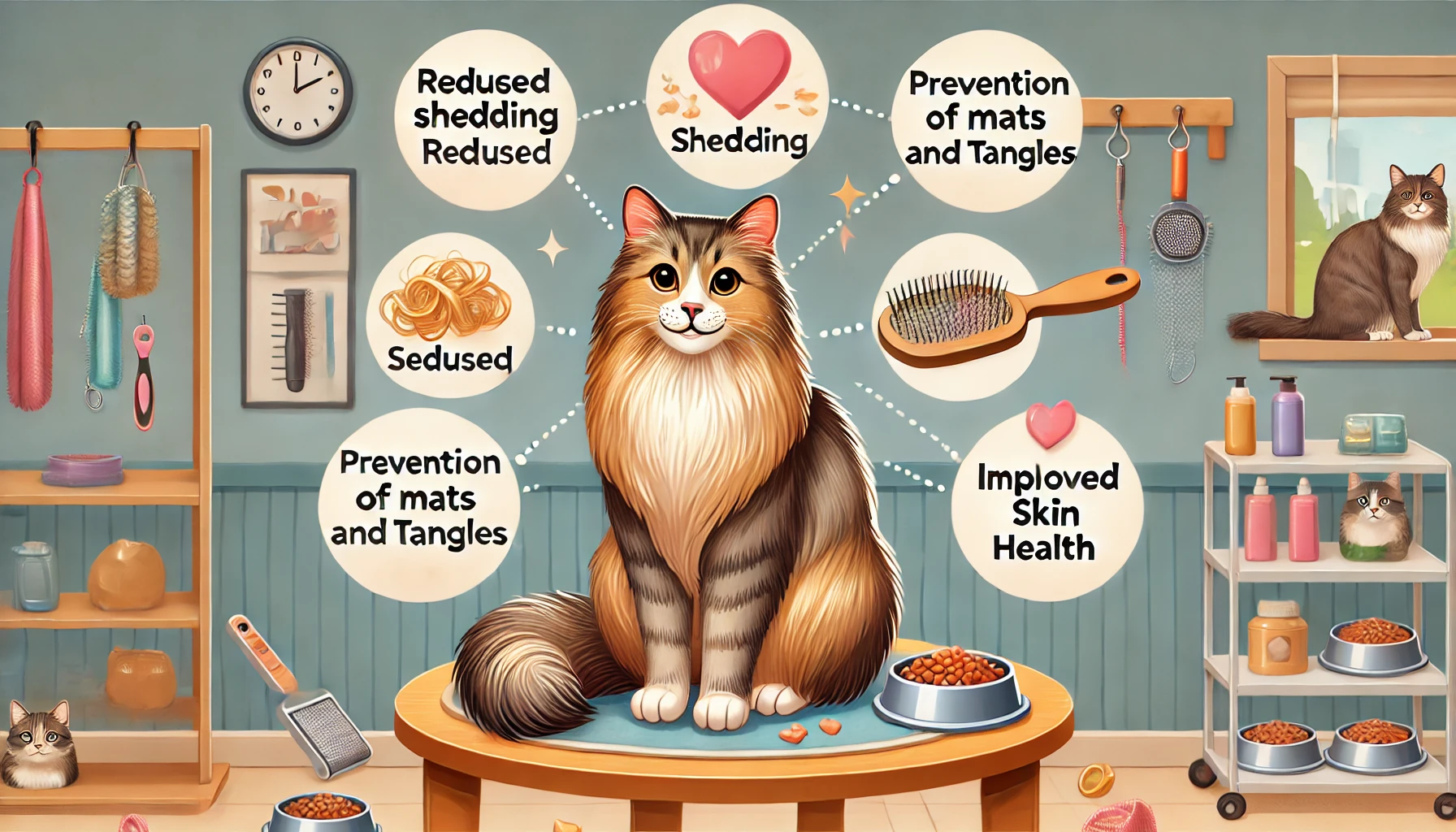
Key Benefits of a Grooming Routine
Establishing a regular grooming routine will help keep your cat’s coat, skin, and nails in the best possible condition.
Some of the key benefits of grooming include:
- Shedding reduction: Regular grooming helps remove loose fur from your cat, reducing the amount of shedding in your home.
- Prevention of mats and tangles: For long-haired cats, daily grooming prevents painful mats and tangles, promoting a healthier coat.
- Improved skin and coat health: Grooming stimulates the natural oils in your cat’s skin, giving them a shiny, healthy coat.
- Stronger bond: Grooming time provides an excellent opportunity to bond with your cat, helping to build trust and comfort.
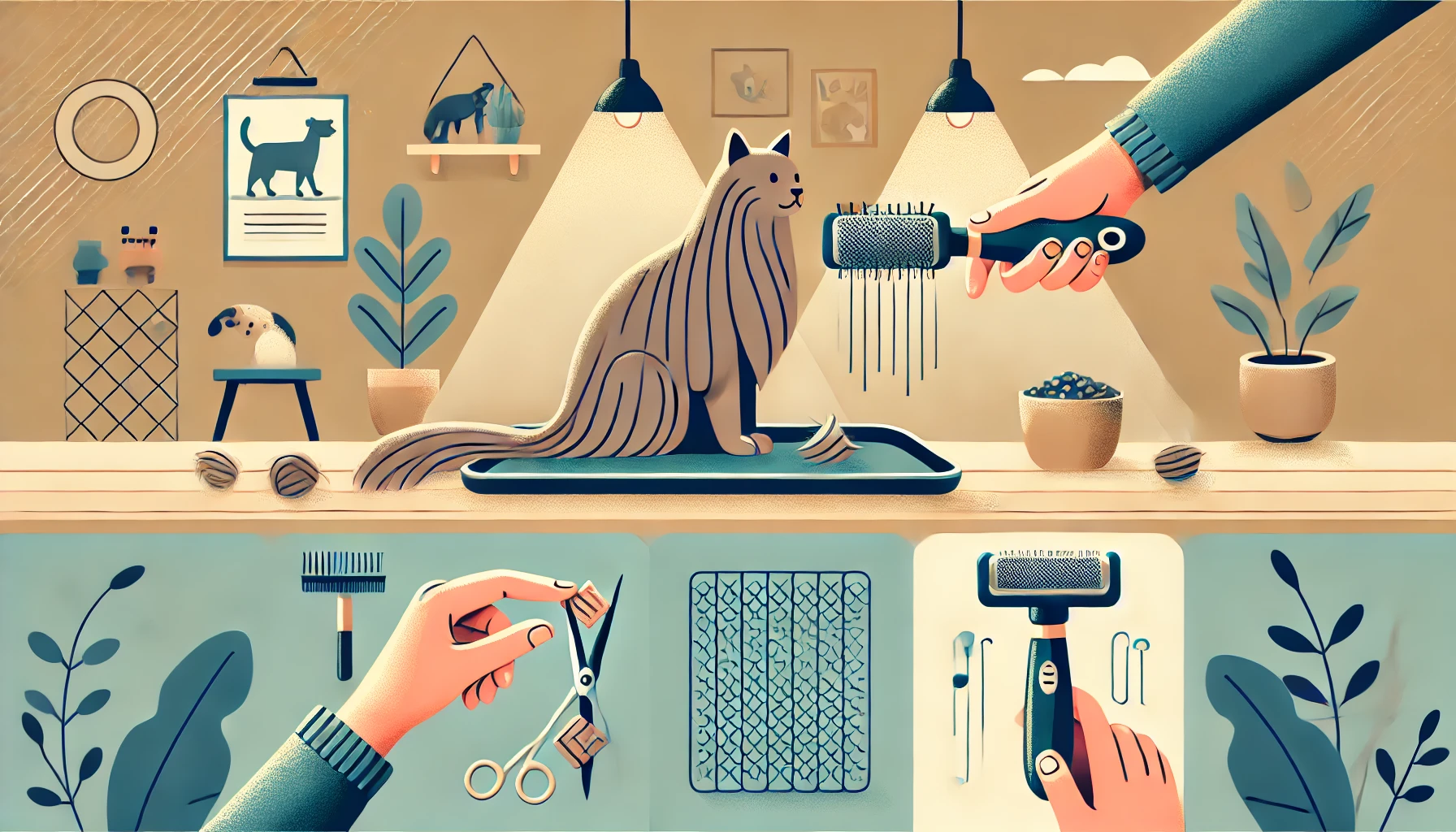
Overcoming Grooming Challenges
Grooming isn’t always easy, and challenges may arise.
Understanding how to handle common grooming issues like mats, shedding, and anxiety will make the process easier:
- Mats and tangles: Regular brushing and using detangling sprays can help manage and prevent mats from forming.
- Shedding and hairballs: Regular combing and the use of de-shedding tools, along with proper nutrition, will reduce shedding and minimize hairballs.
- Grooming anxiety: For cats that experience anxiety during grooming, using calming products, patience, and positive reinforcement can help reduce stress.
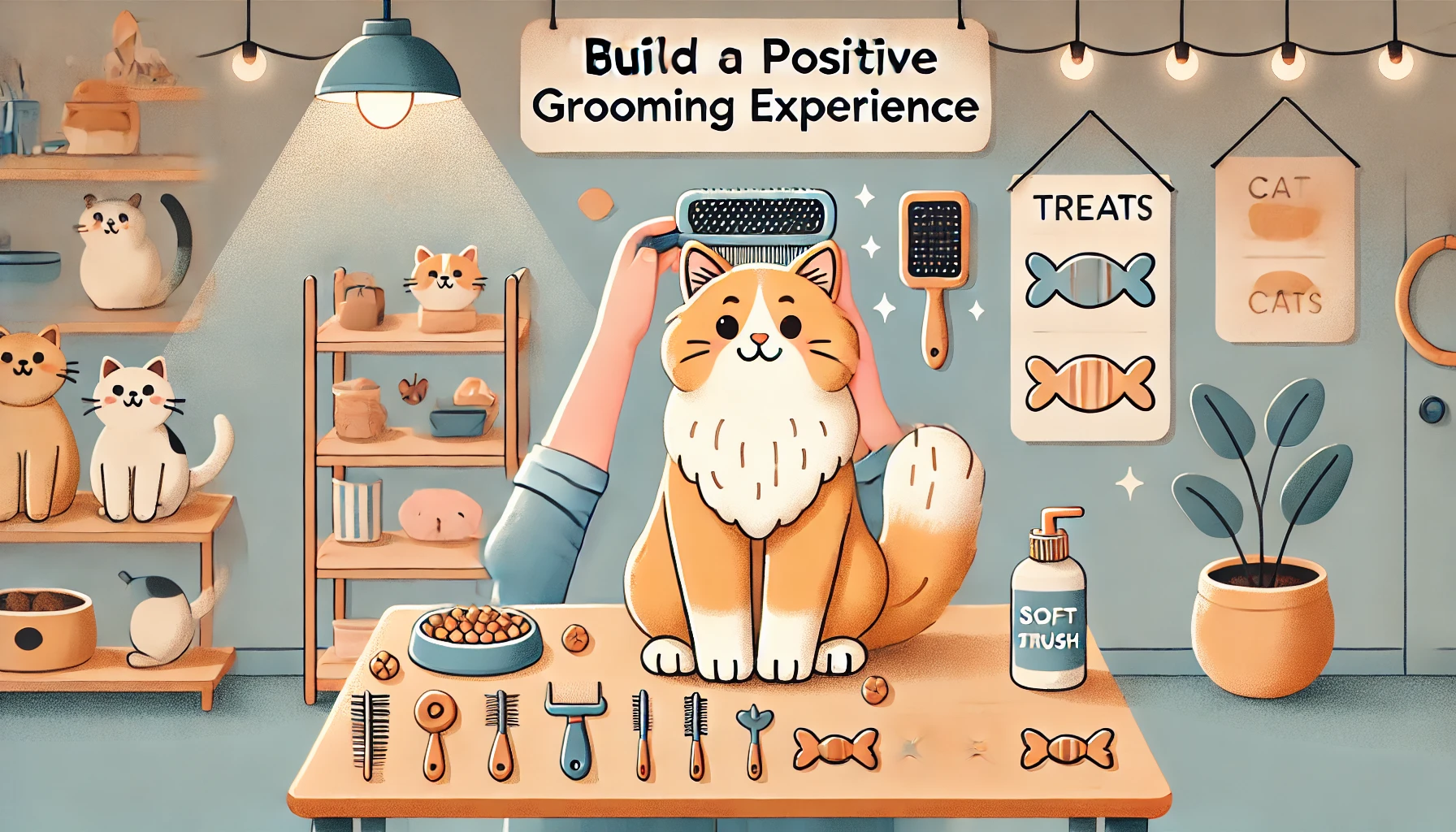
Building a Positive Experience
Grooming should be a positive and rewarding experience for your cat.
You can achieve this by creating a serene environment and gradually introducing grooming activities with positive reinforcement.
Offering treats, praise, and using calming products will help ensure that each grooming session is as stress-free as possible.
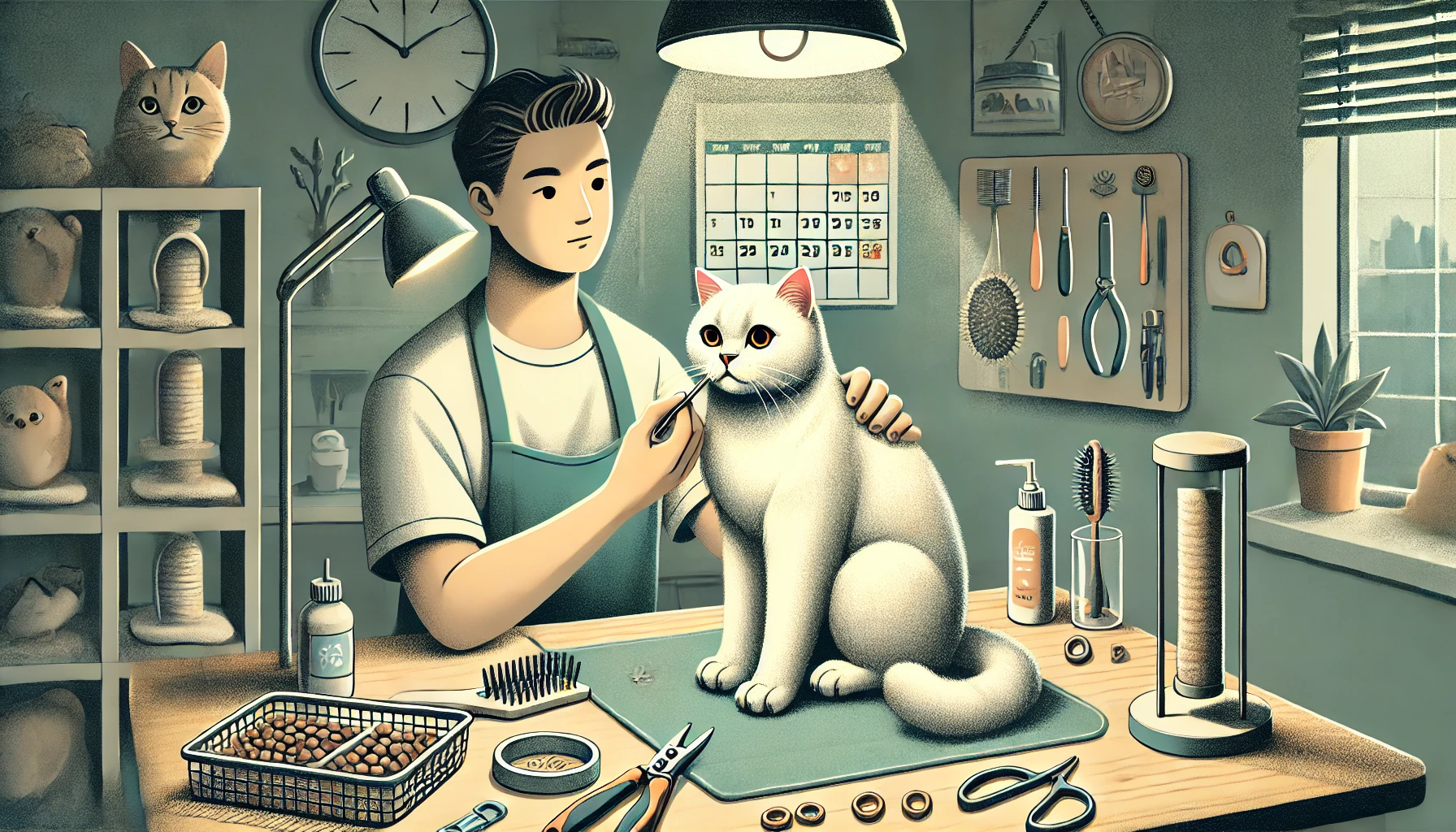
Consistency is Key
Whether you are brushing, bathing, or trimming nails, consistency is crucial.
Cats thrive on routine, and establishing a regular grooming schedule will help your cat feel more relaxed during each session.
Remember, grooming is not just about keeping your cat clean; it’s about improving their health, preventing potential problems, and spending quality time together.
This guide provides a complete approach to building a grooming routine that will keep your feline friend healthy, happy, and comfortable.
With patience, the right tools, and proper care, grooming will become an enjoyable and rewarding part of your cat’s life.
Consistency and the right grooming routine can ensure your cat stays healthy and happy, with grooming sessions becoming a fun, bonding experience.
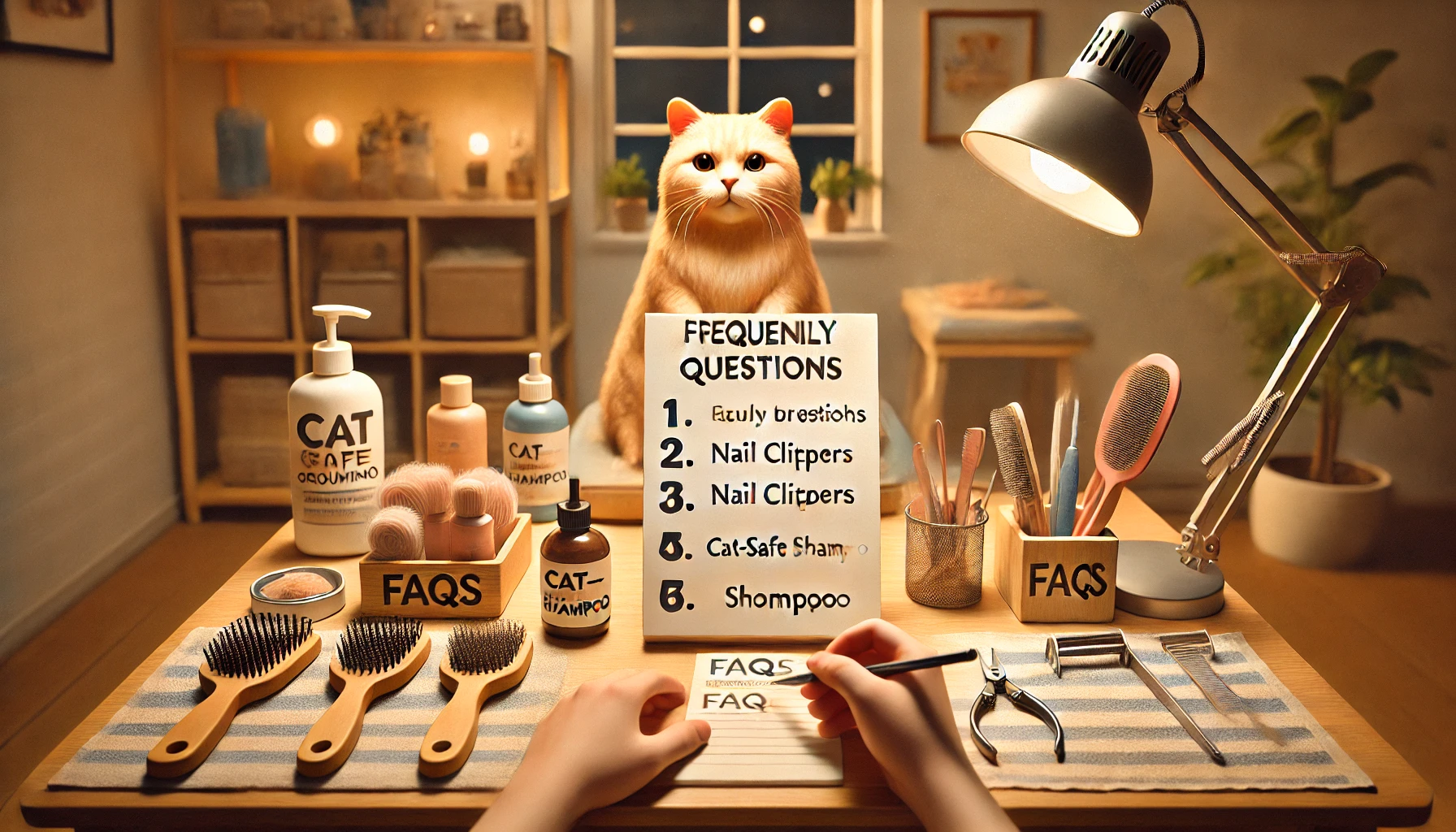
FAQs: Building a Cat Grooming Routine
Grooming is one of the most important aspects of health and hygiene when it comes to your cat.
Here are some of the most frequently asked questions about building and maintaining a grooming routine for your cat.
How often should I brush my cat?
For short-haired cats, once a week is often enough.
Long-haired cats may require daily sessions to avoid mats and tangles.
Regular brushing reduces shedding and keeps your cat’s coat healthy.
What type of brush is best for my cat?
The best brush depends on your cat’s coat type.
Short-haired cats typically do well with a bristle brush, while slicker brushes or wide-tooth combs work best for detangling long-haired cats.
Can I bathe my cat with regular shampoo?
No, only shampoos formulated for cats should be used.
Human and dog shampoos can irritate a cat’s skin and cause allergic reactions.
Always use a shampoo specifically formulated for cats to avoid skin problems.
How do I handle a cat that hates grooming?
If your cat dislikes grooming, introduce it gradually.
Use treats and positive reinforcement, and keep sessions short.
Calming products like pheromone sprays or treats can help relax your cat before grooming.
How do I reduce my cat's shedding?
Regular brushing removes loose fur, especially during heavy shedding seasons.
De-shedding tools and a diet rich in omega-3 fatty acids can help keep your cat’s coat healthy and reduce shedding.
How do I prevent mats from forming in long-haired cats?
To avoid mats, brush your long-haired cat daily with a slicker brush or wide-tooth comb.
Regular brushing removes loose hair, untangles knots, and keeps the coat free of painful mats and tangles.
When should I trim my cat's nails?
Trim your cat’s nails every 2 to 4 weeks, depending on how fast they grow.
Regular nail trimming prevents overgrown nails, which can lead to discomfort and potential health issues, such as painful nail breakage.

